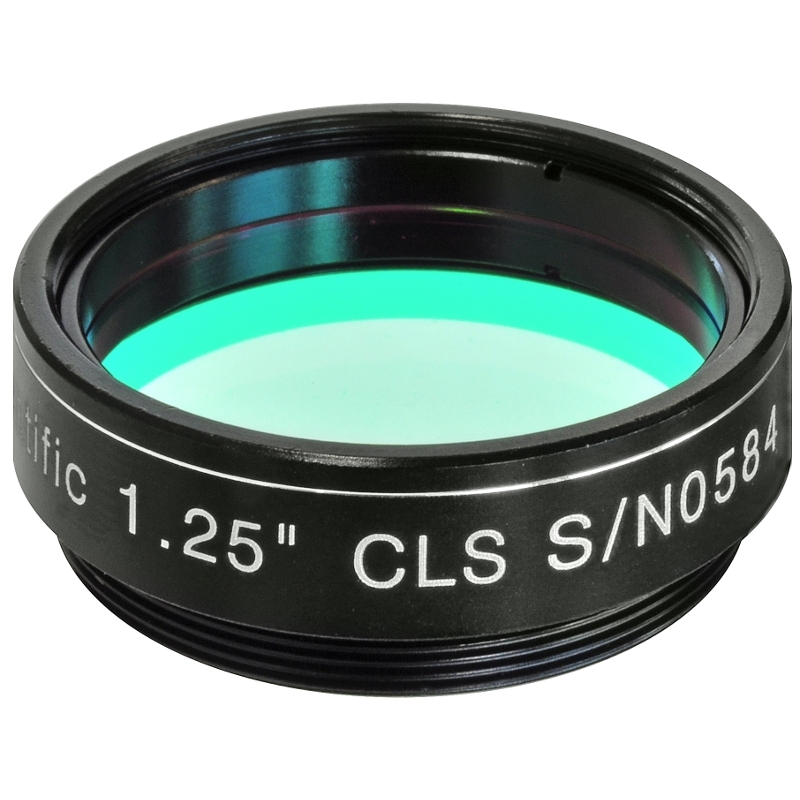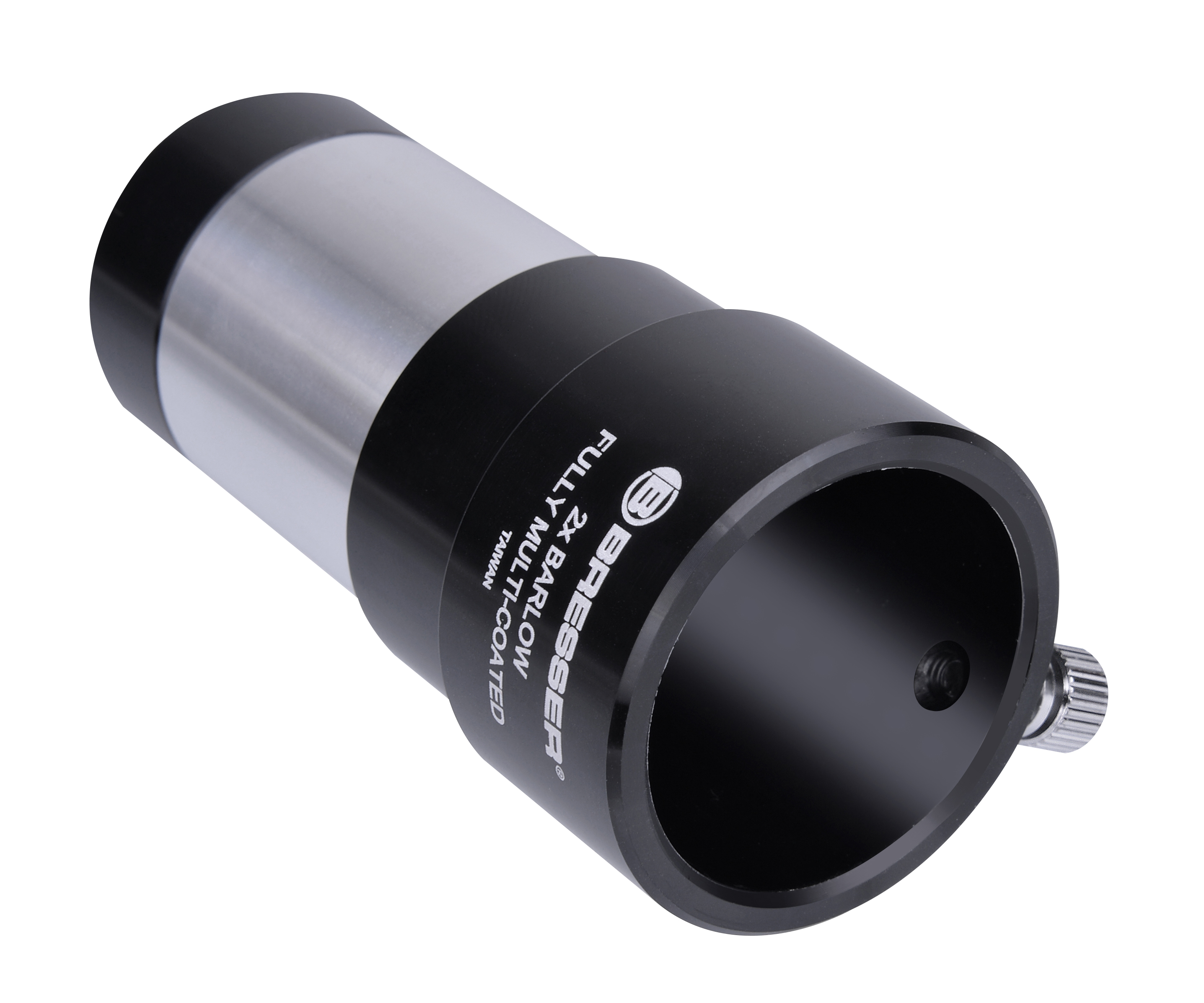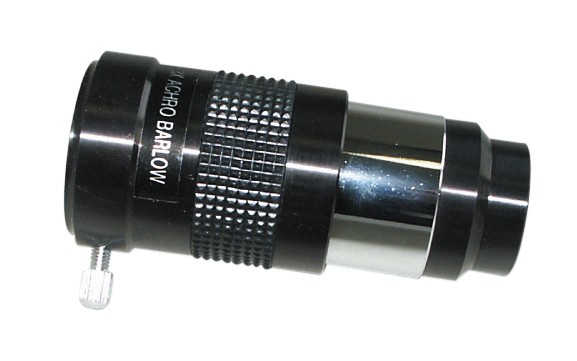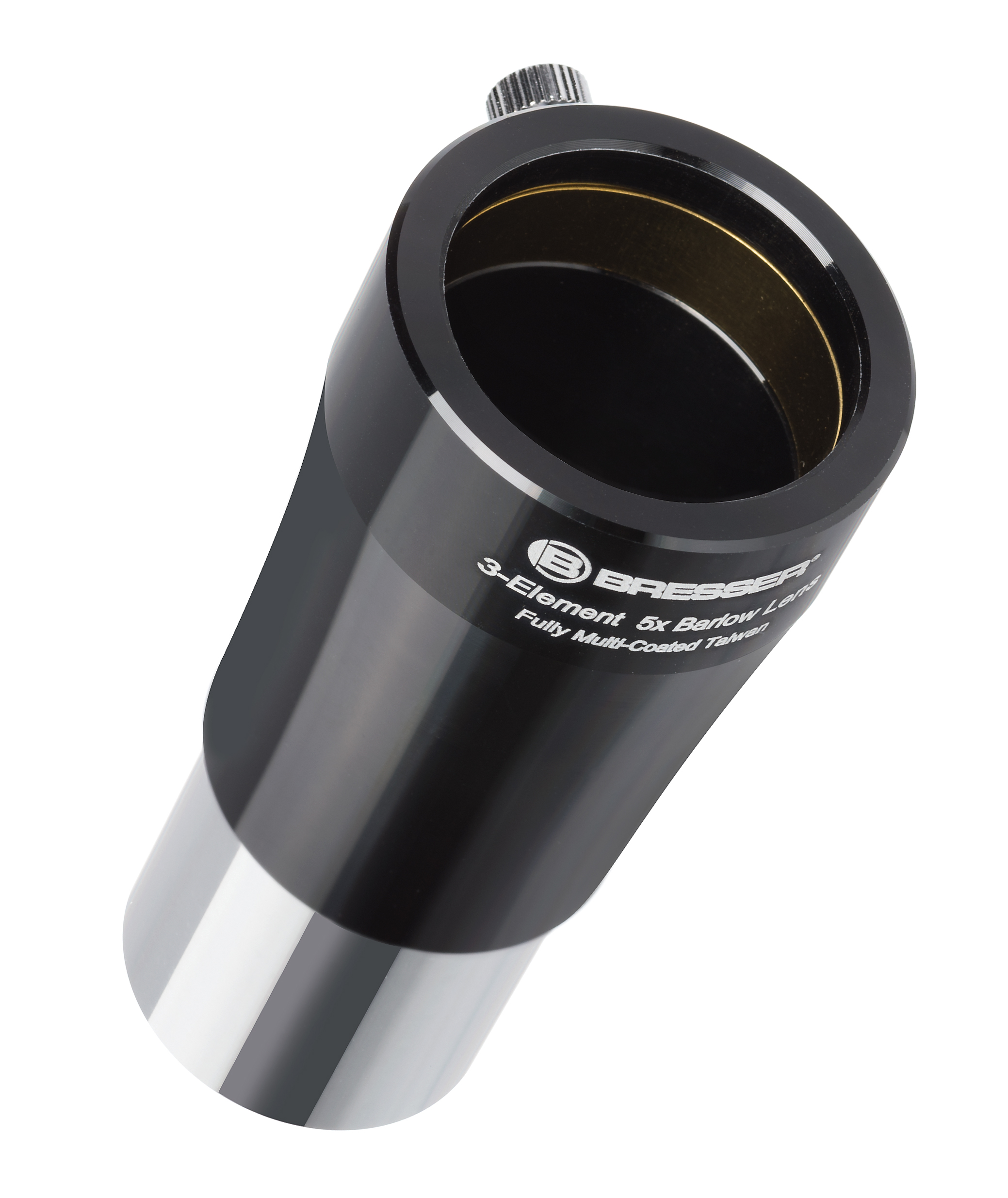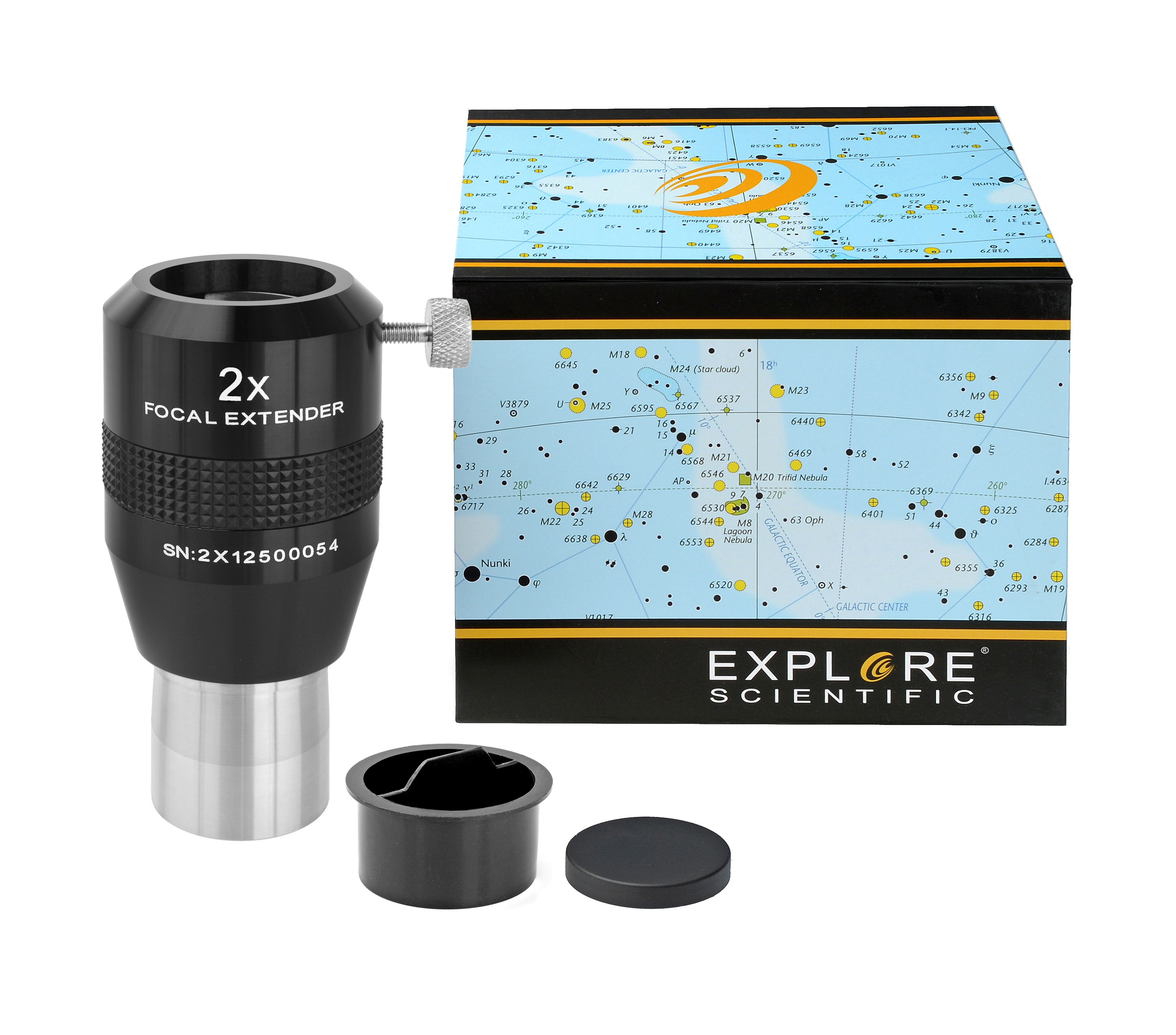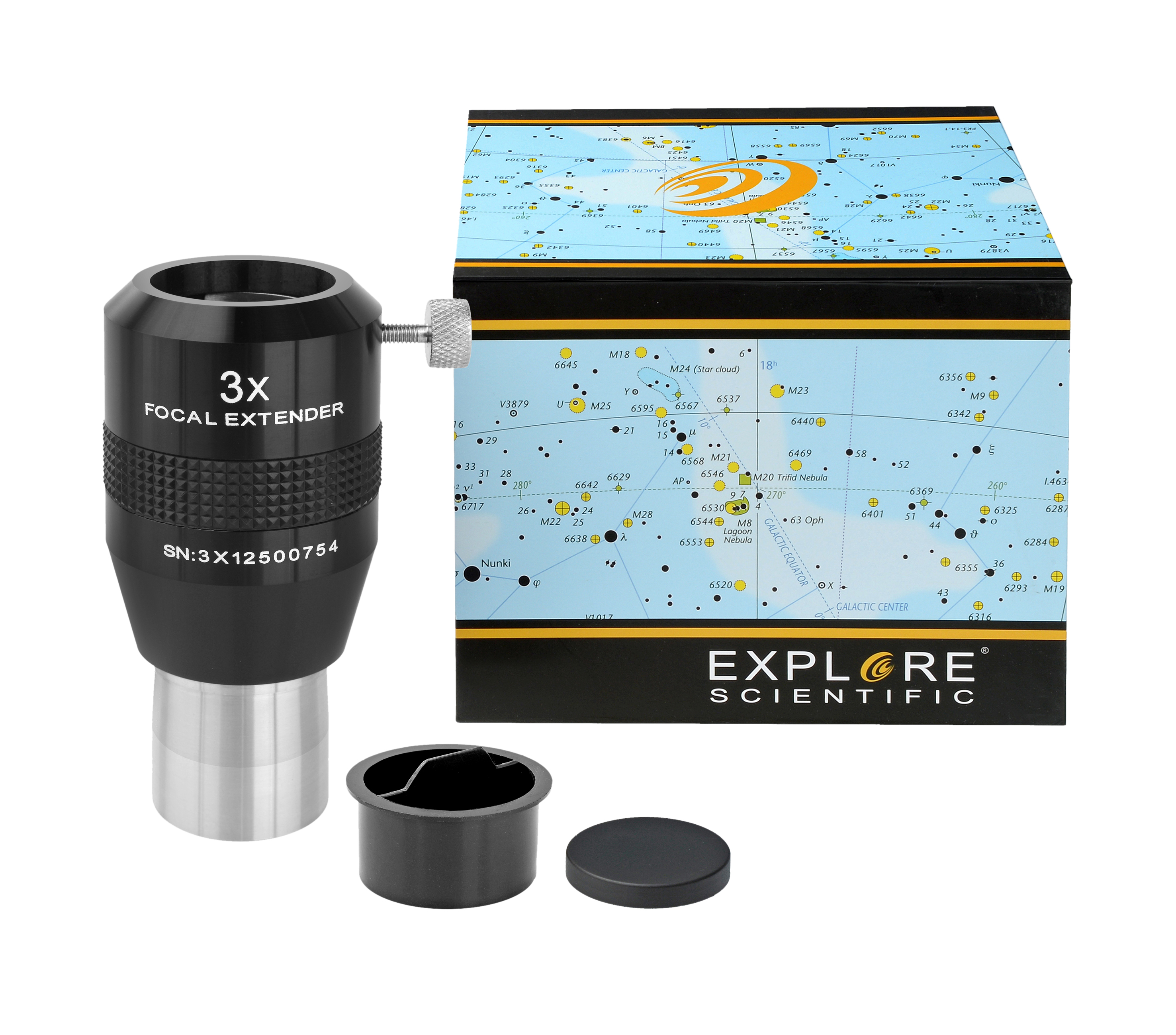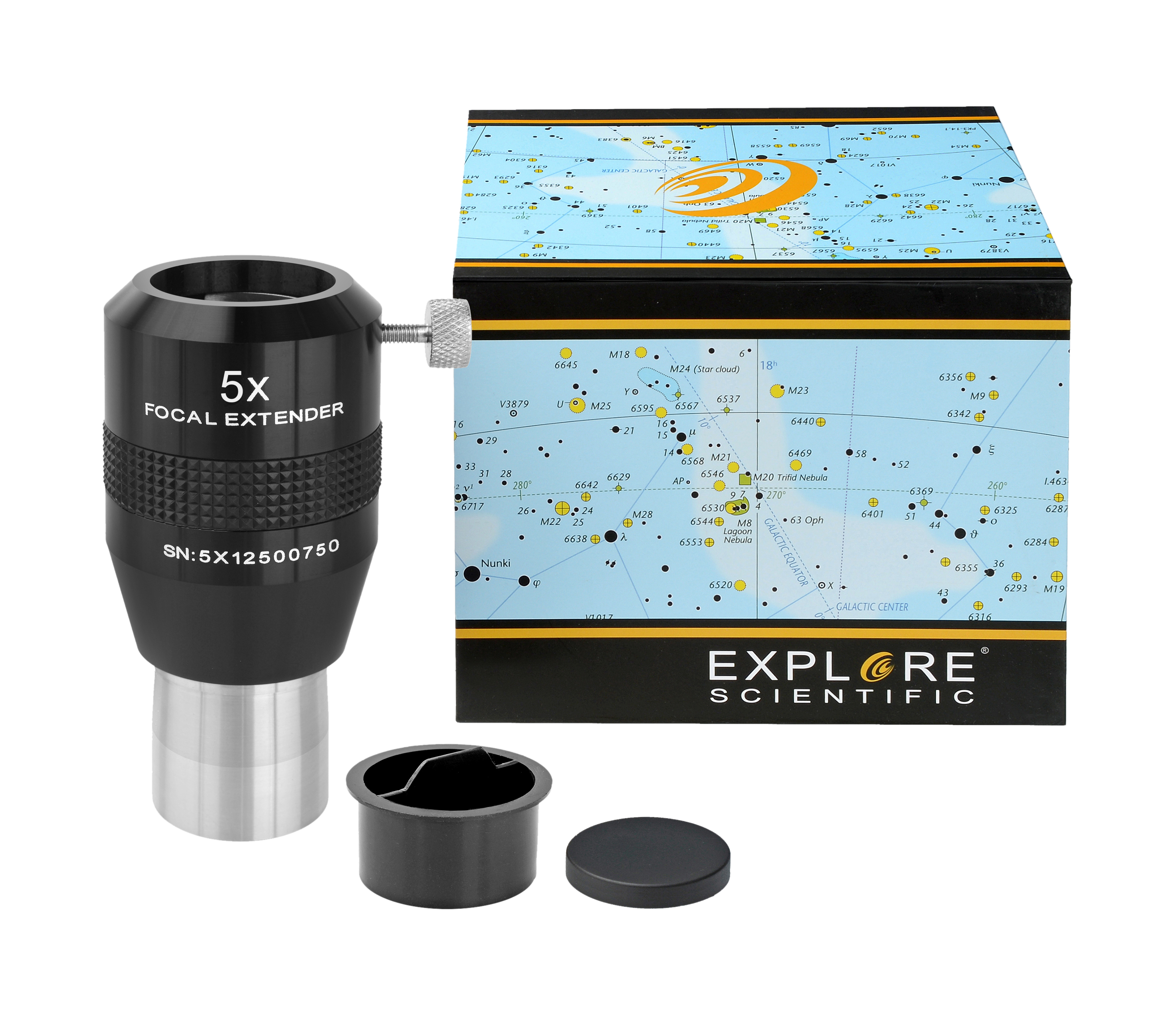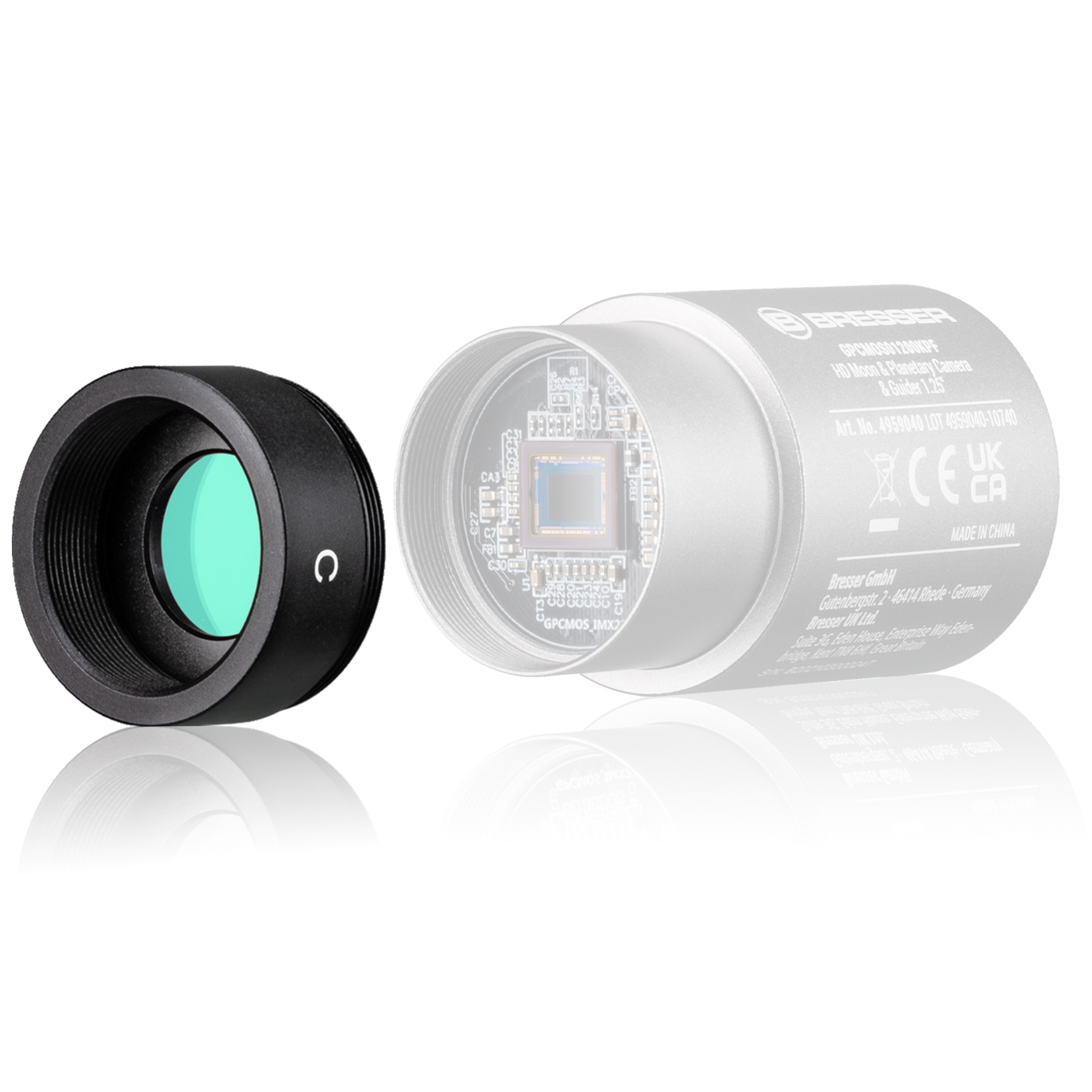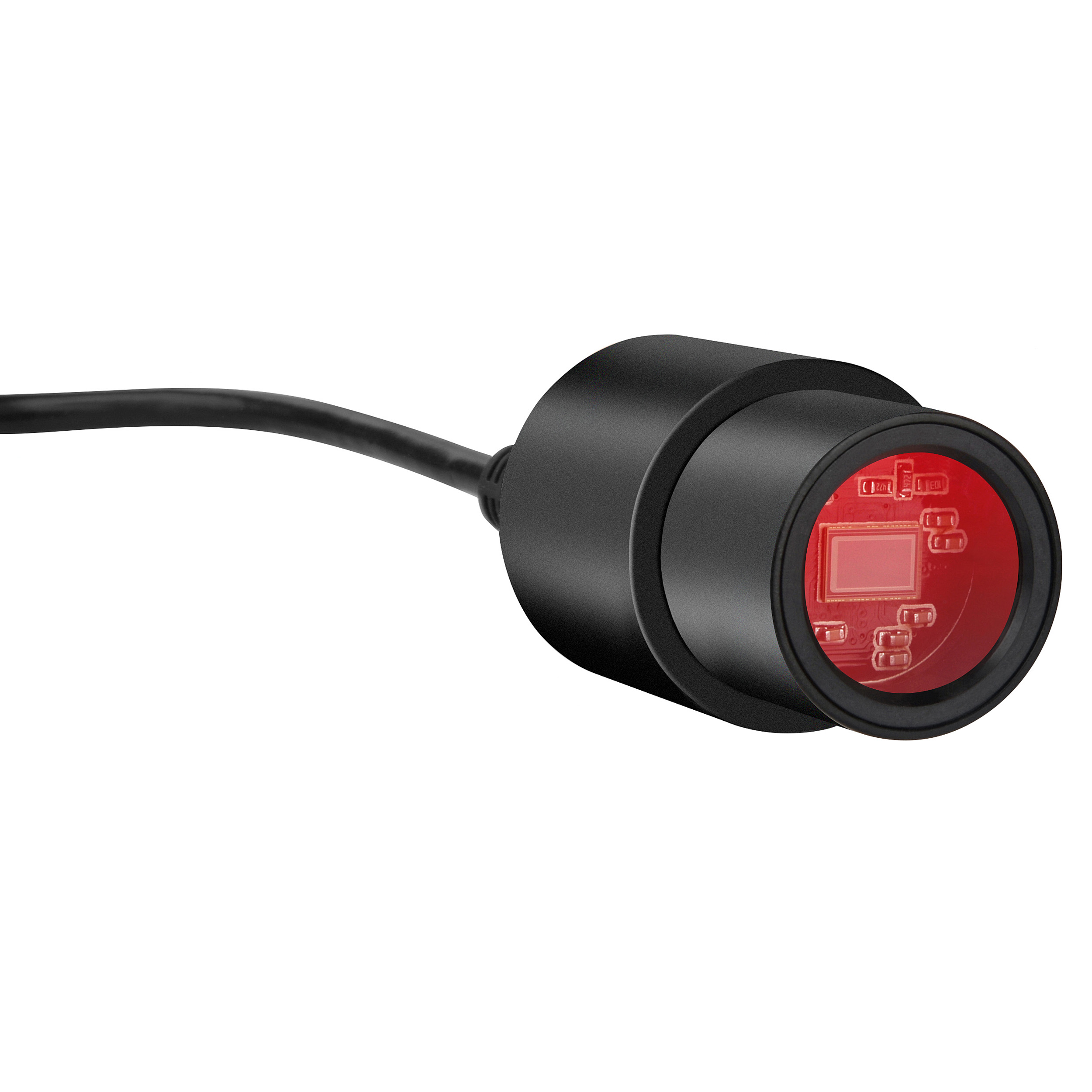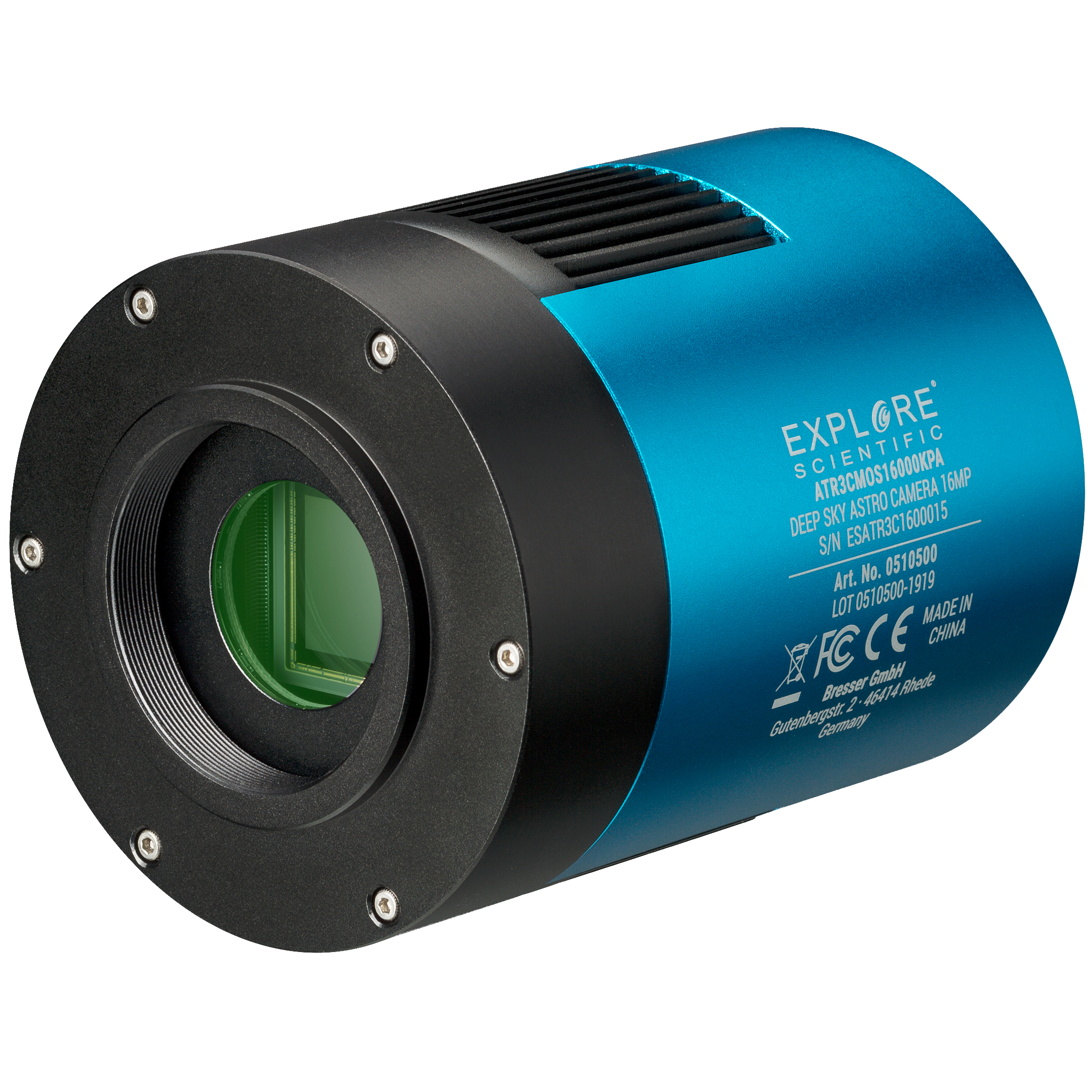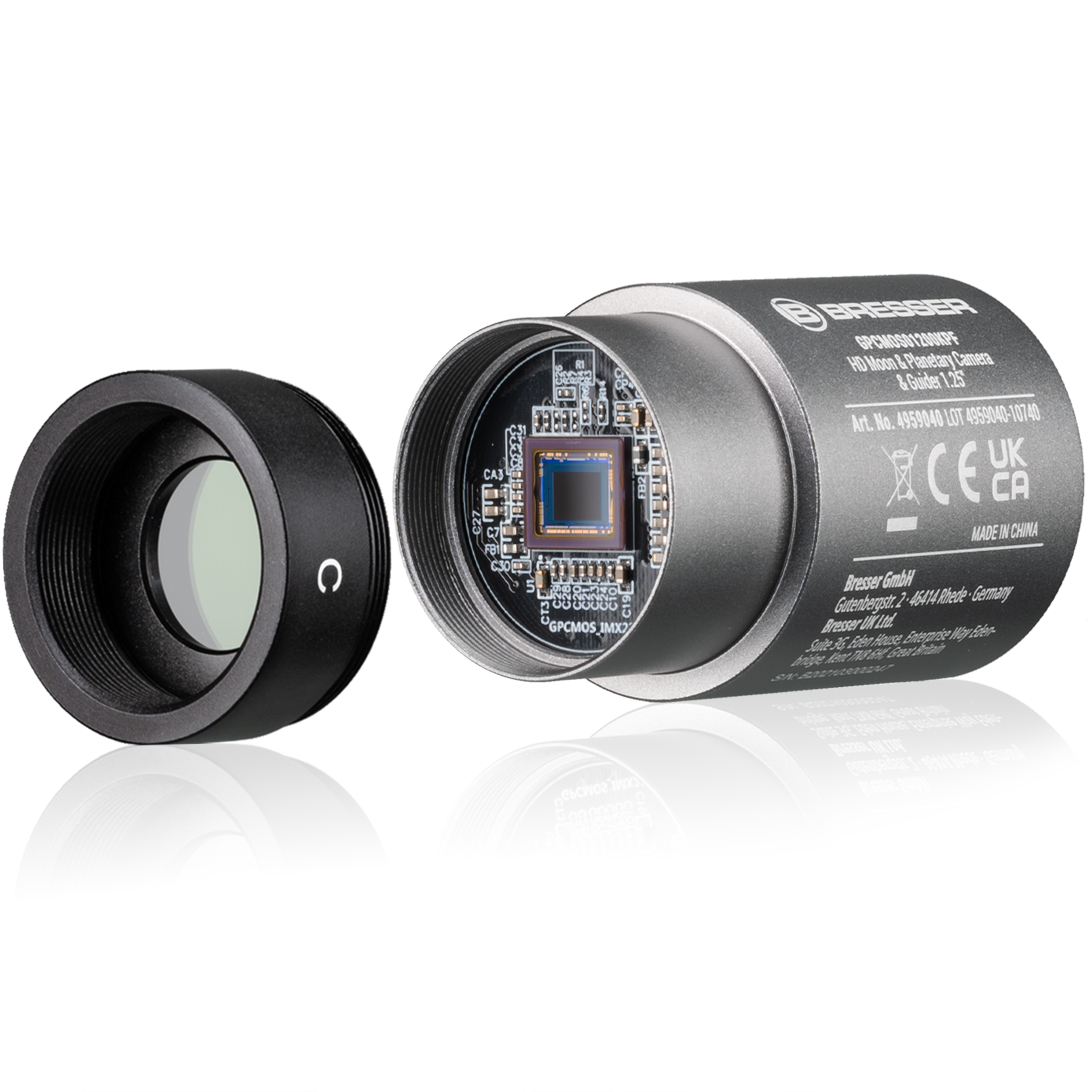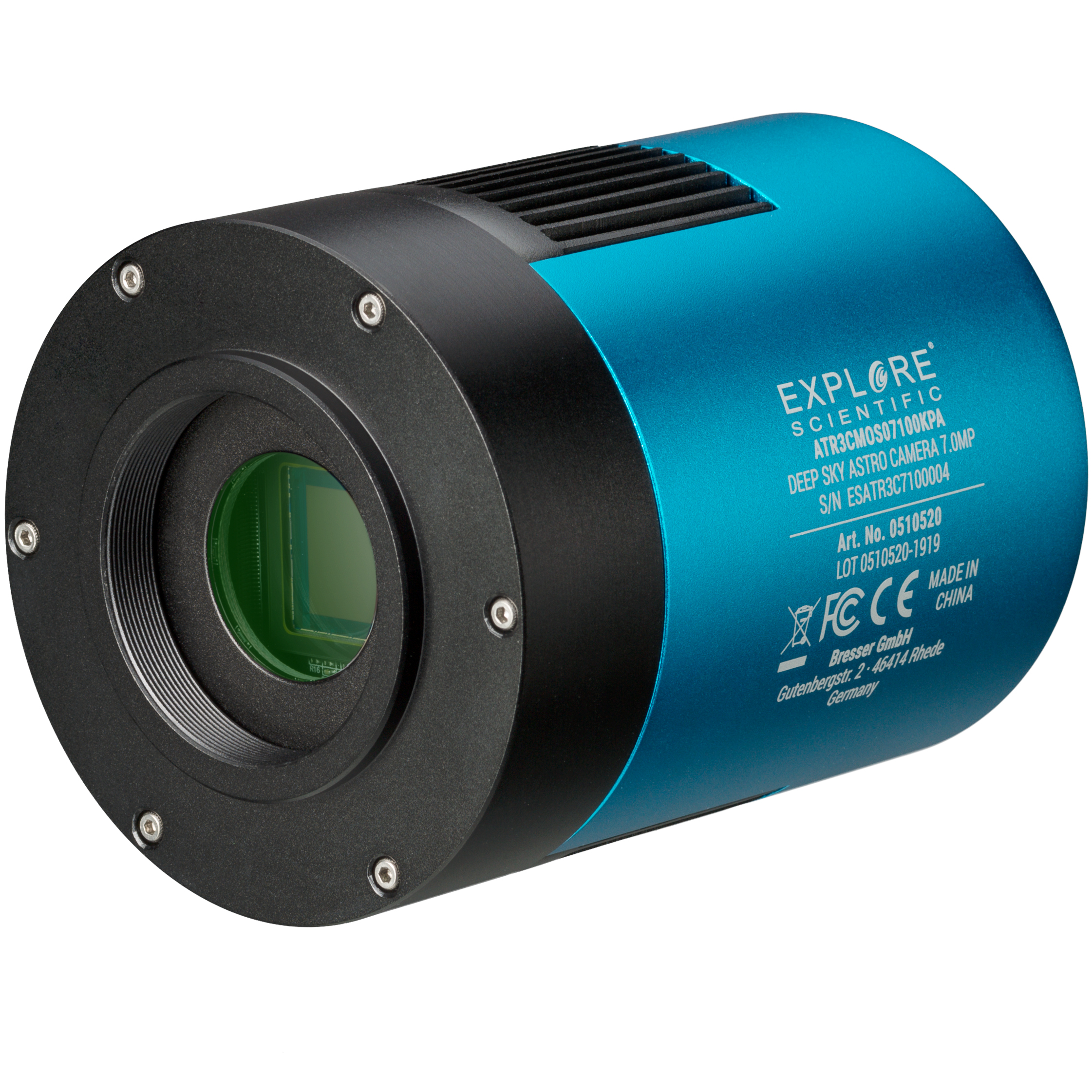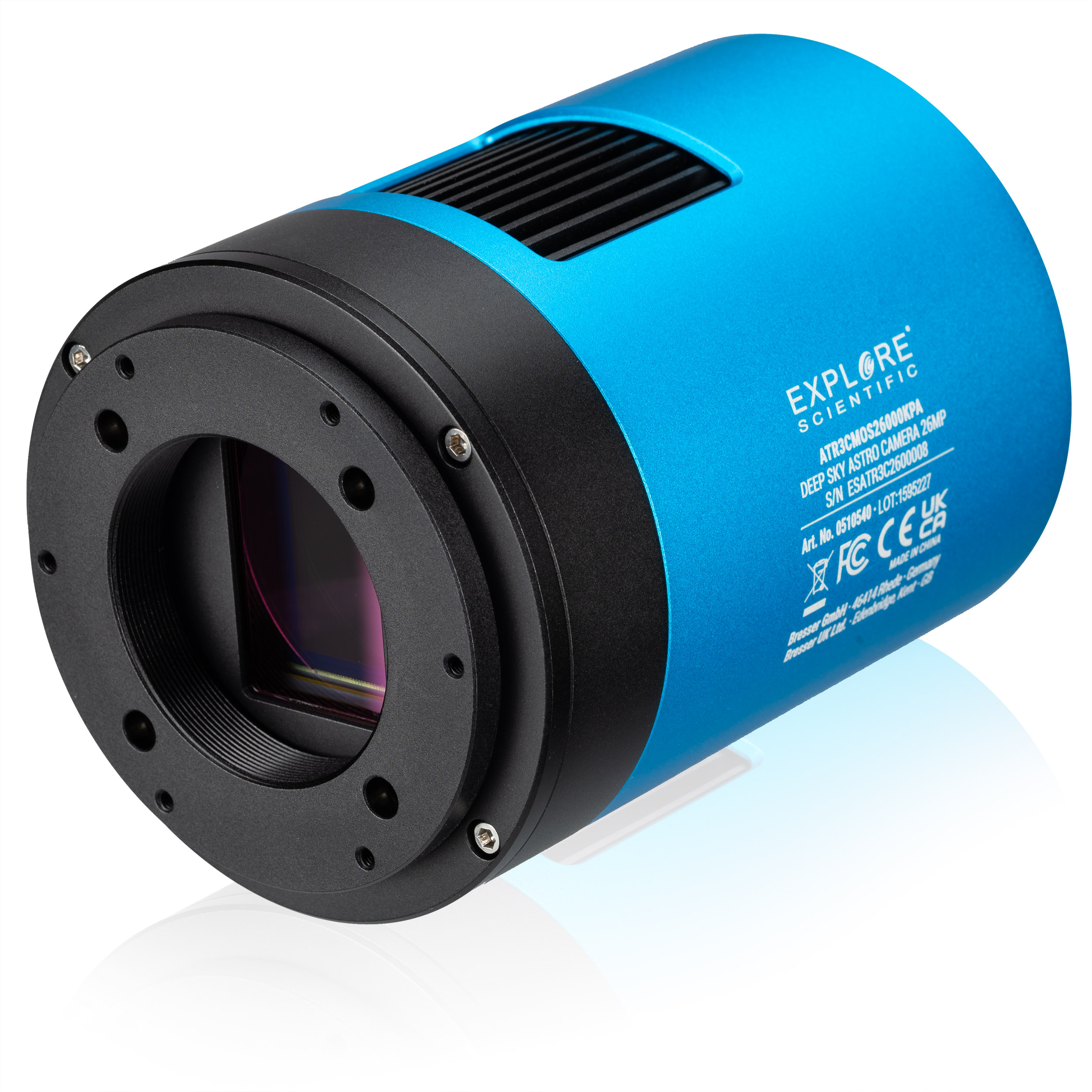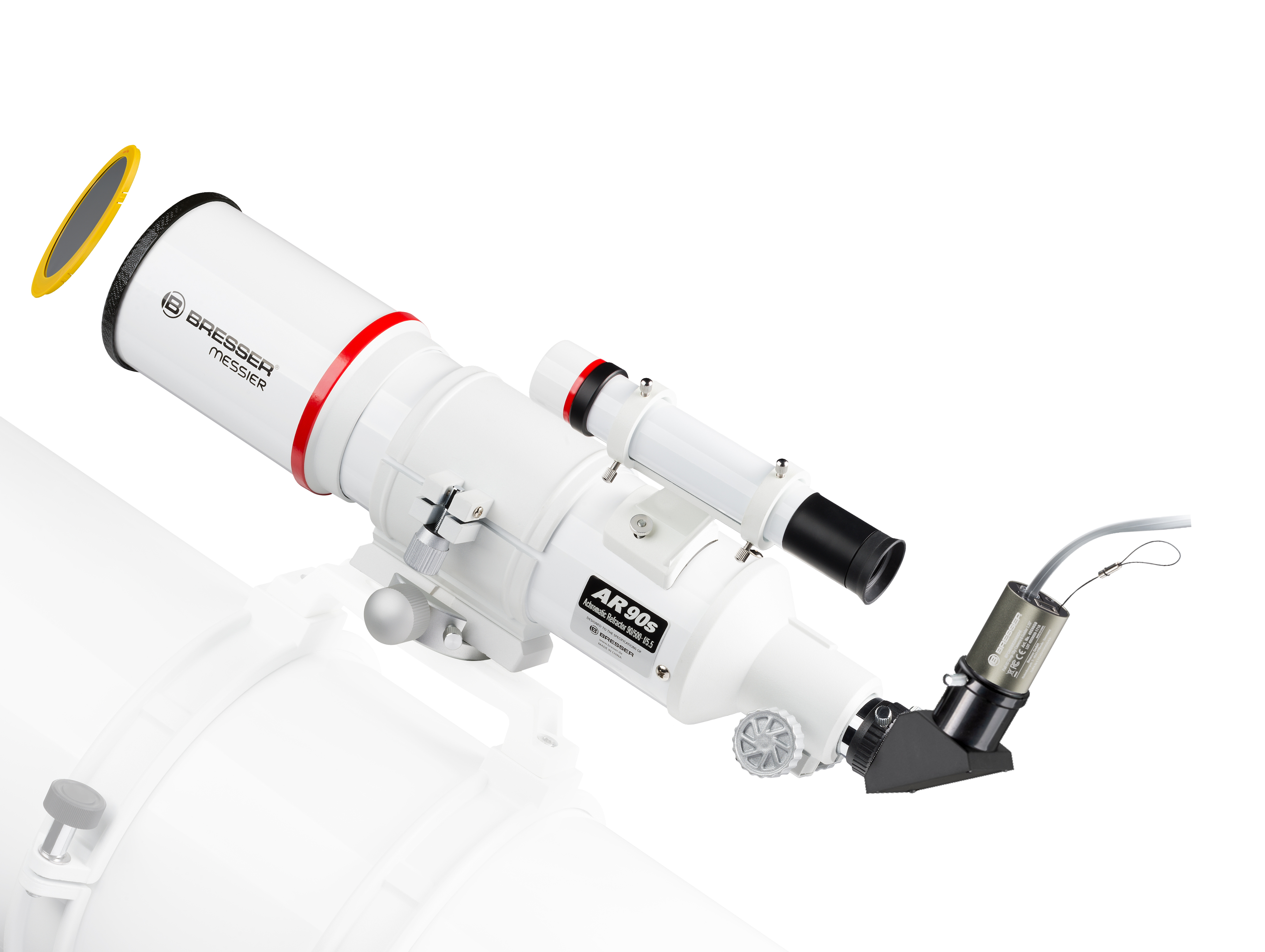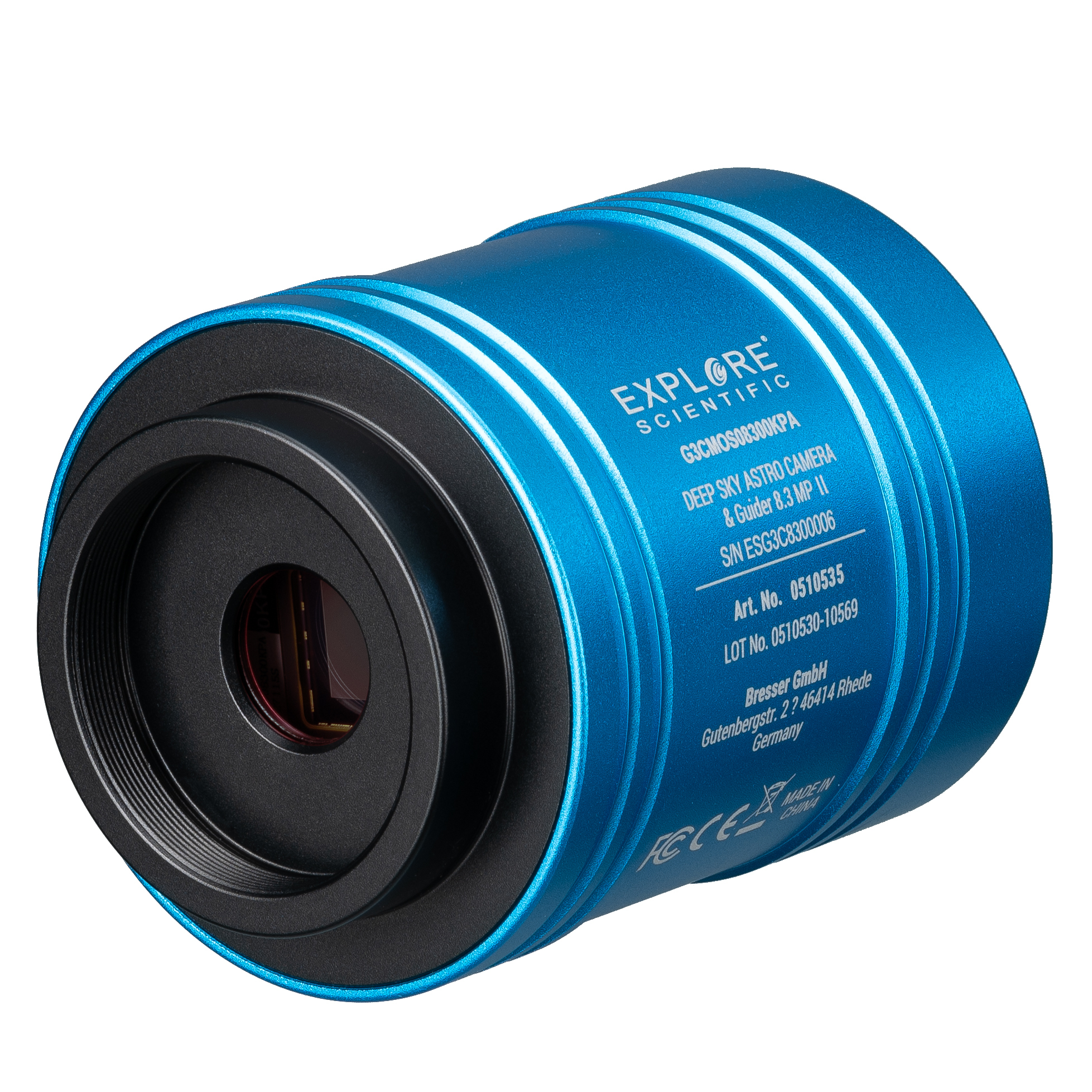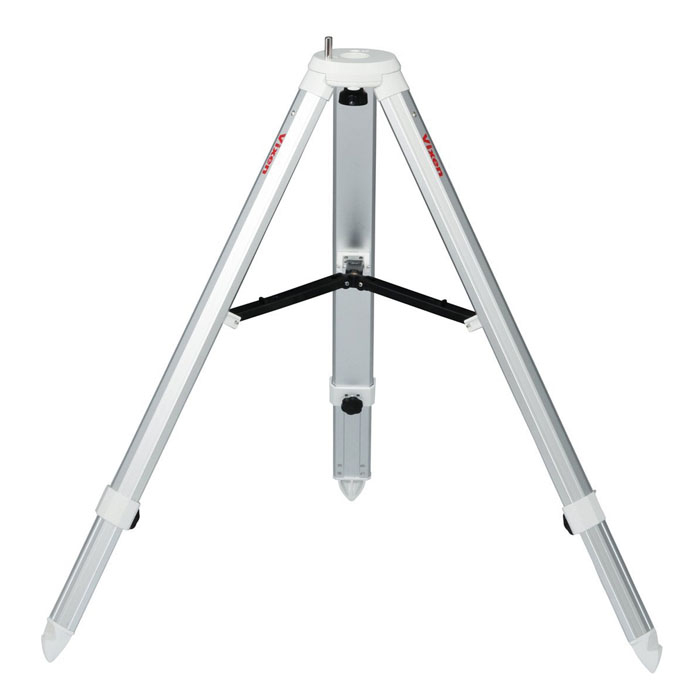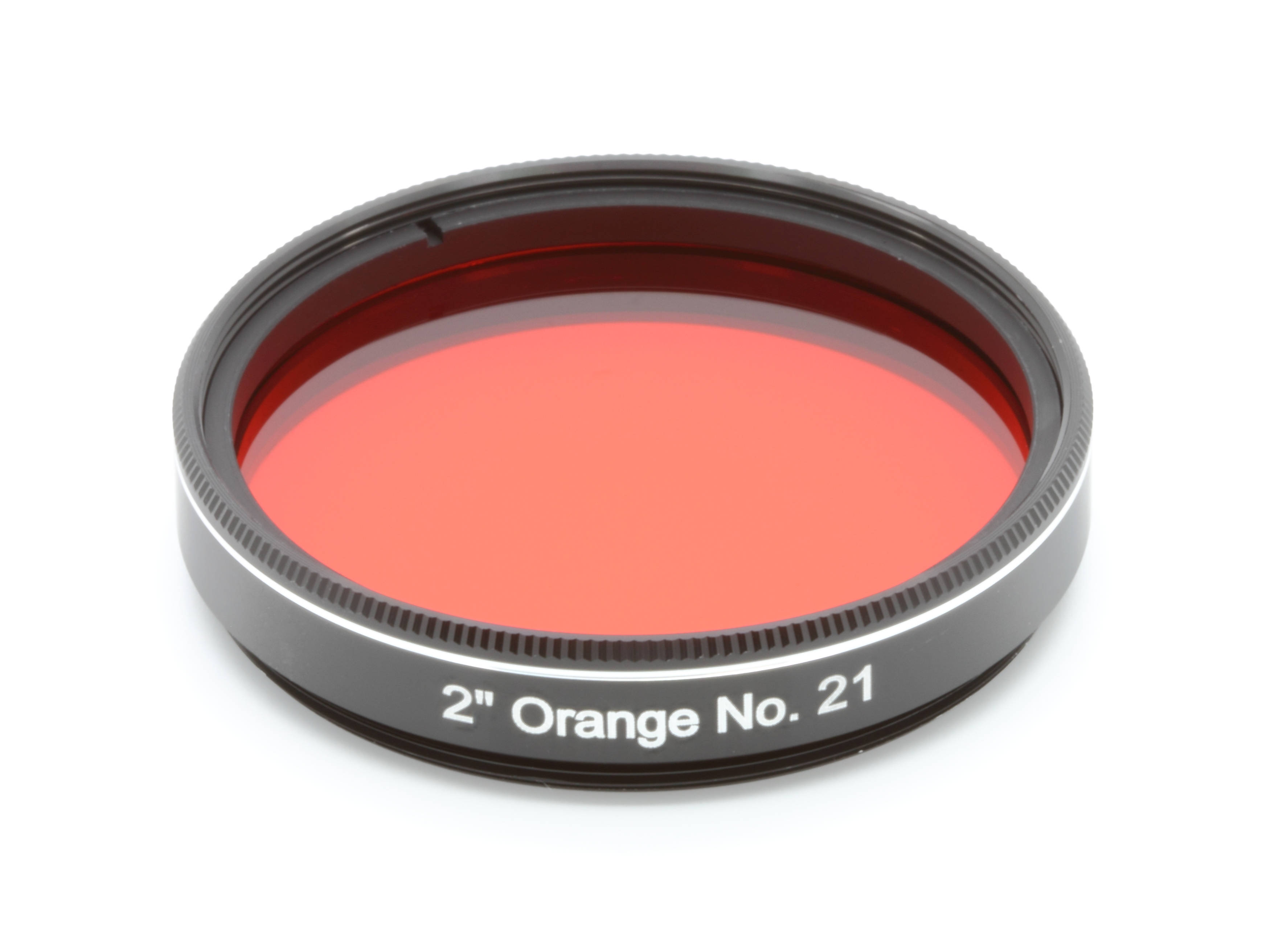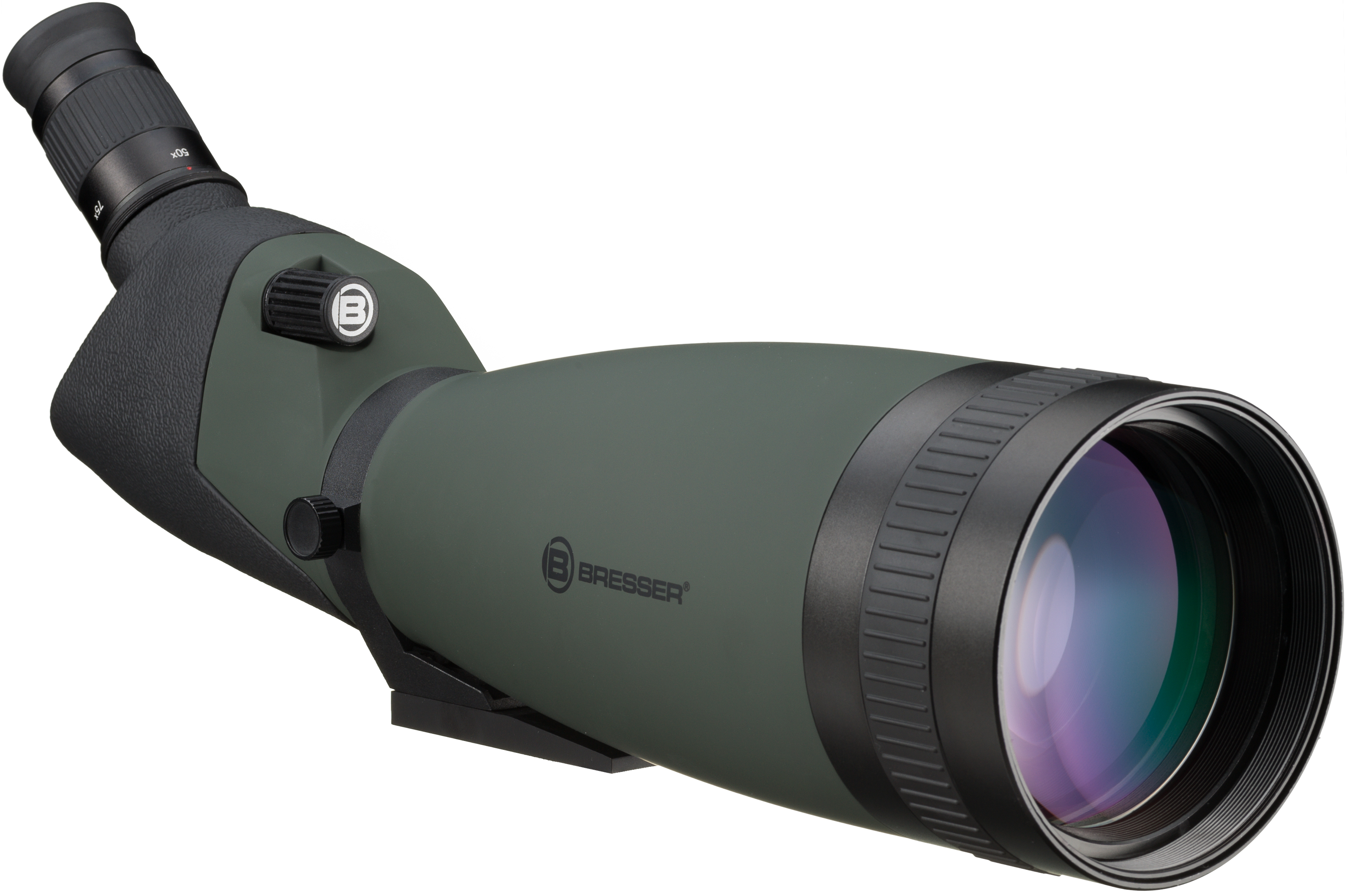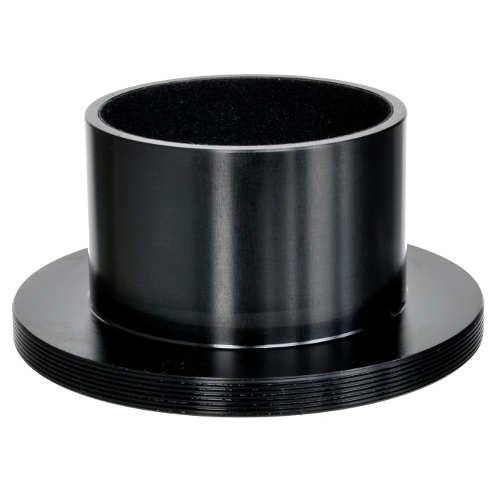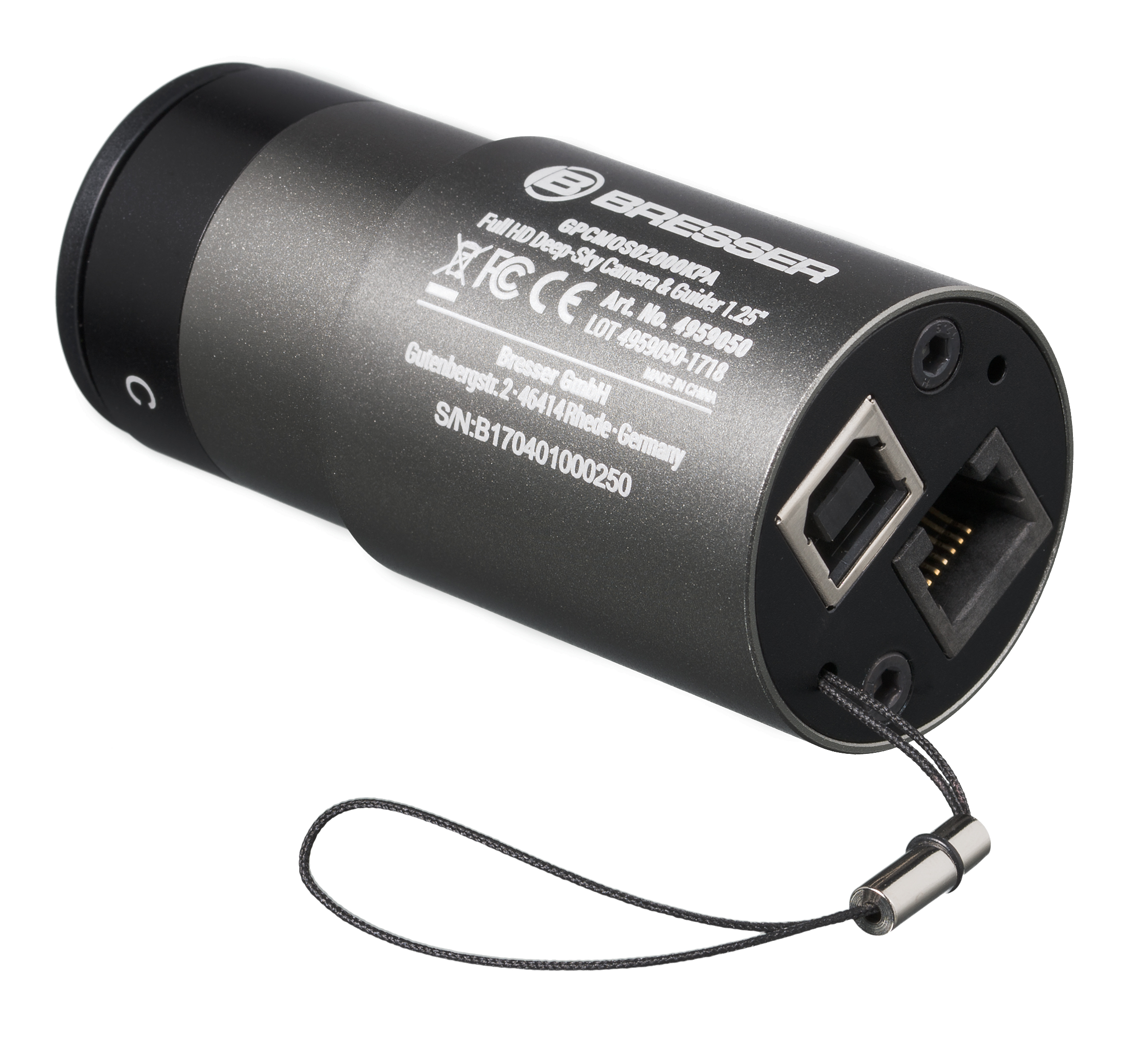
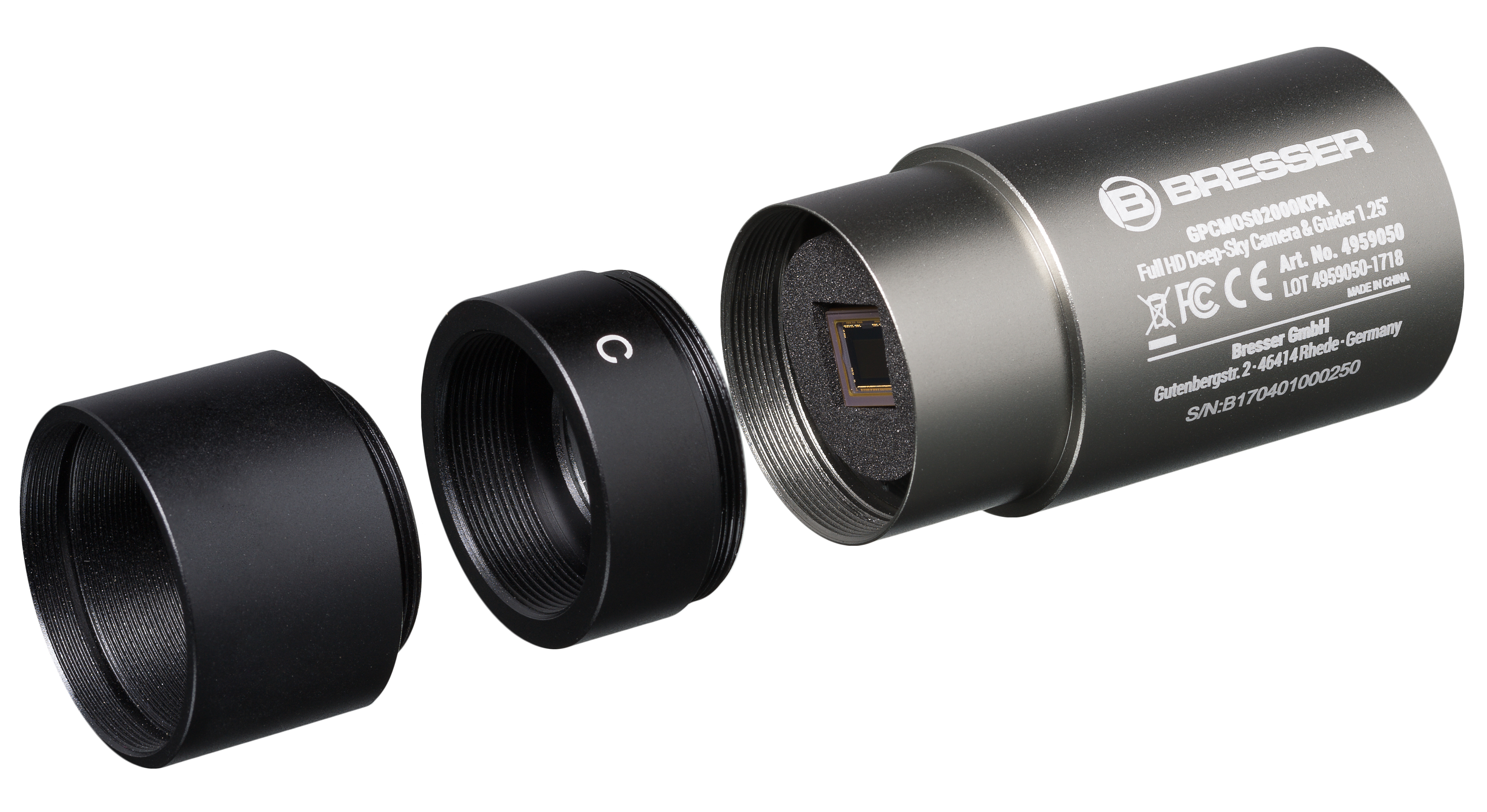
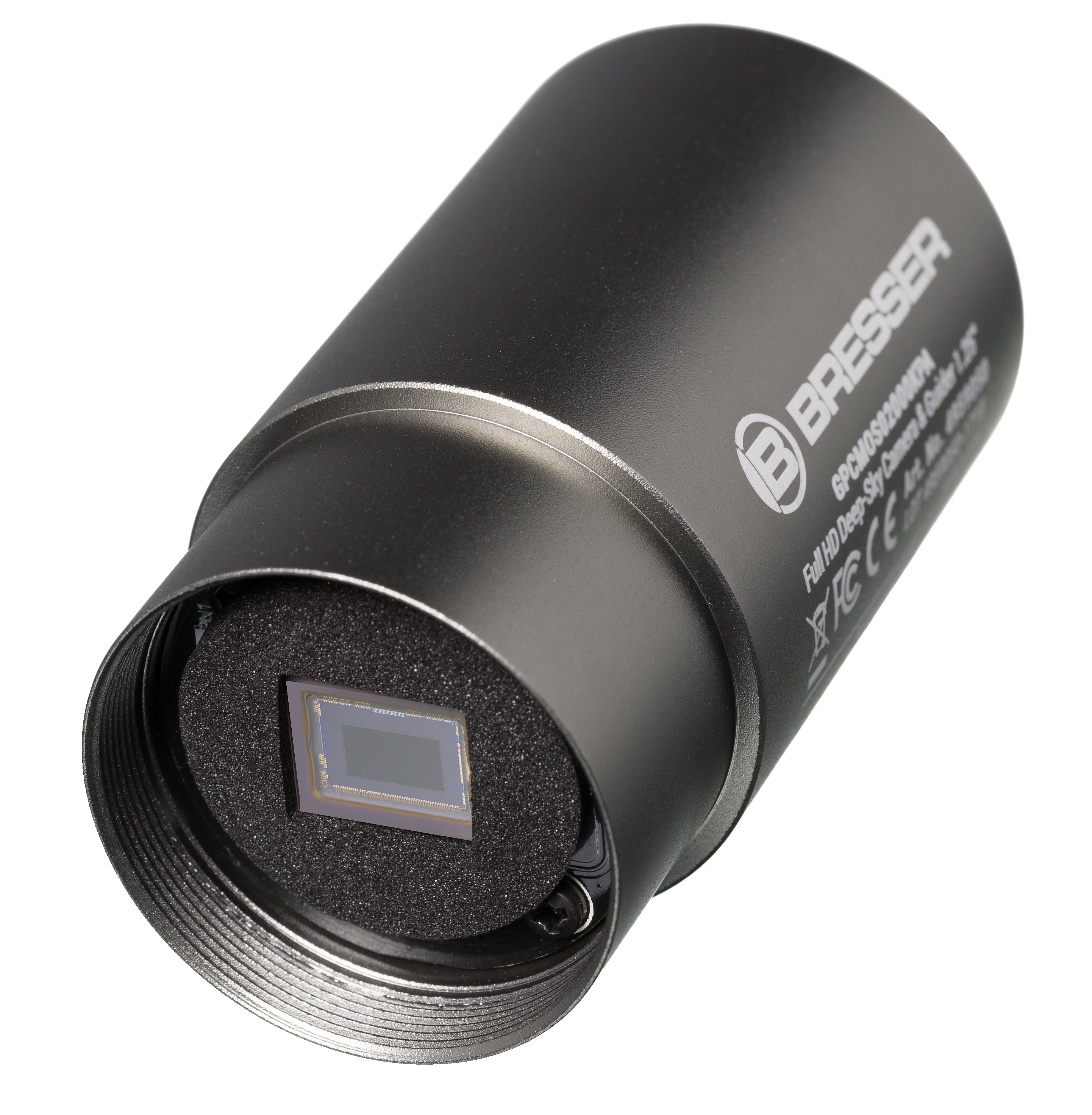
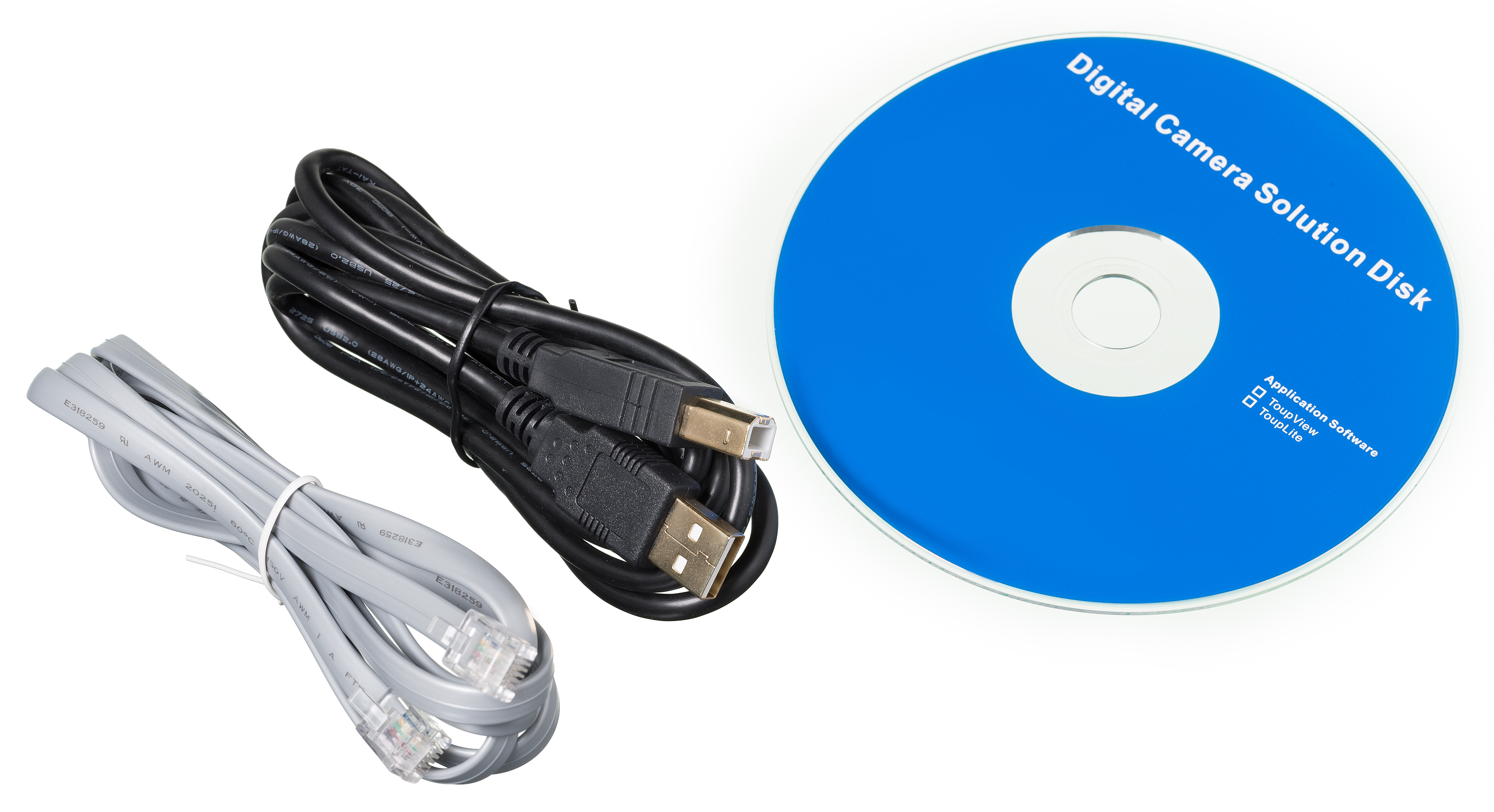
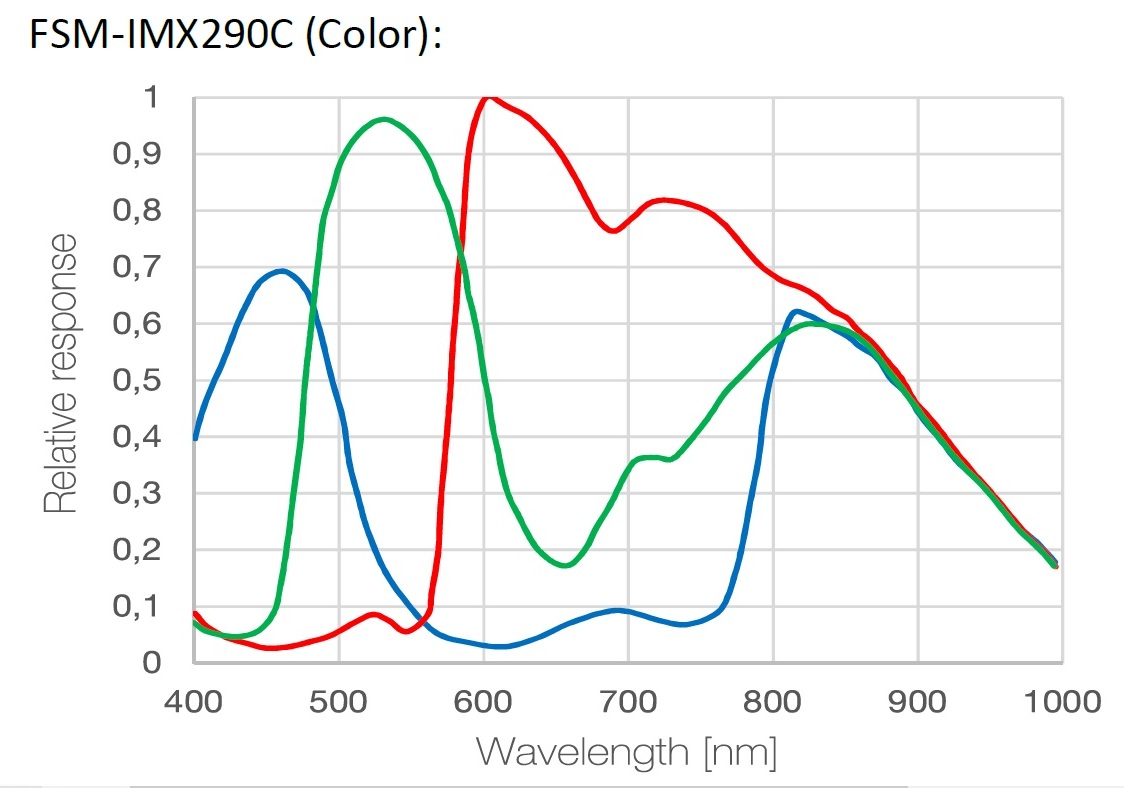
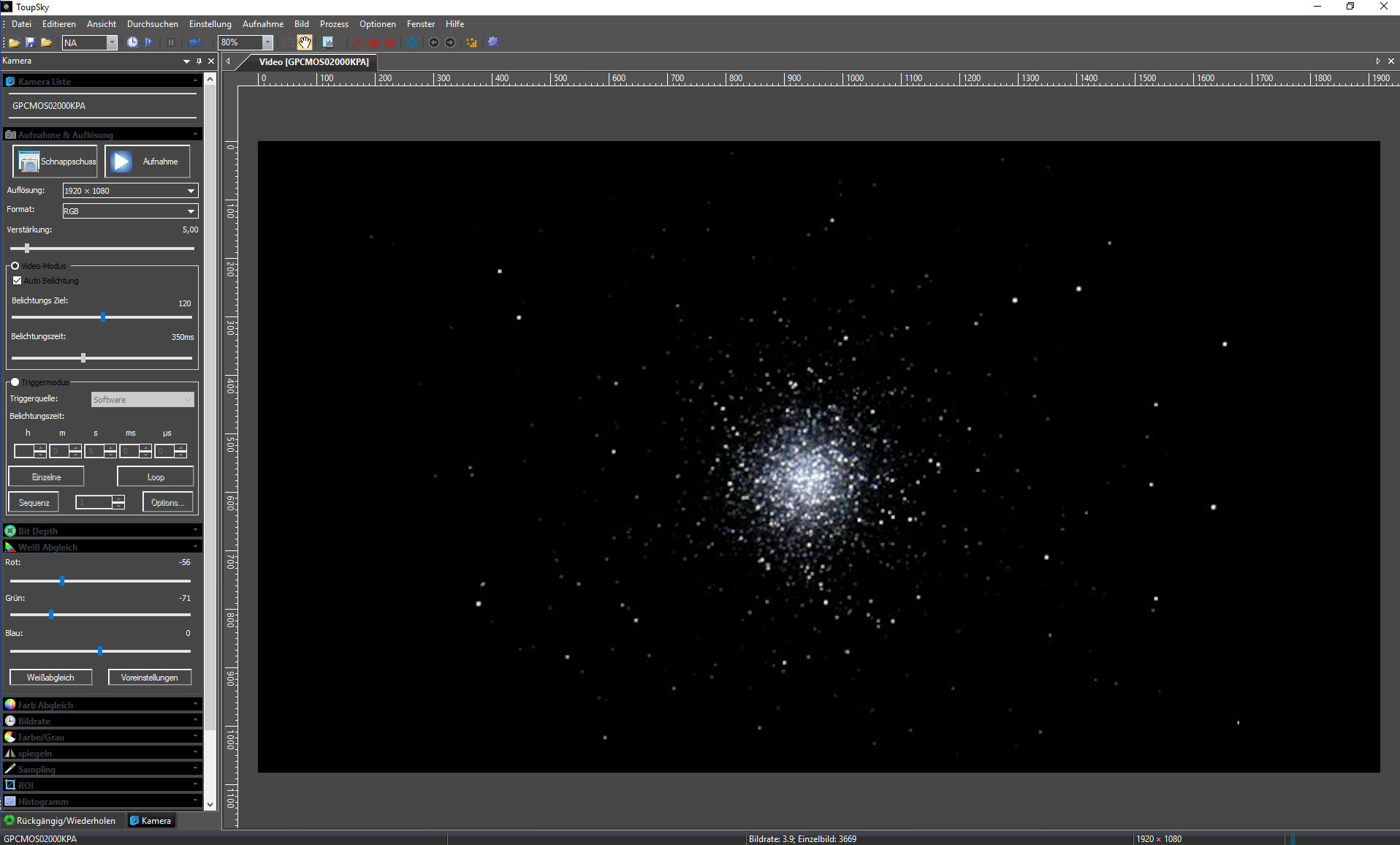
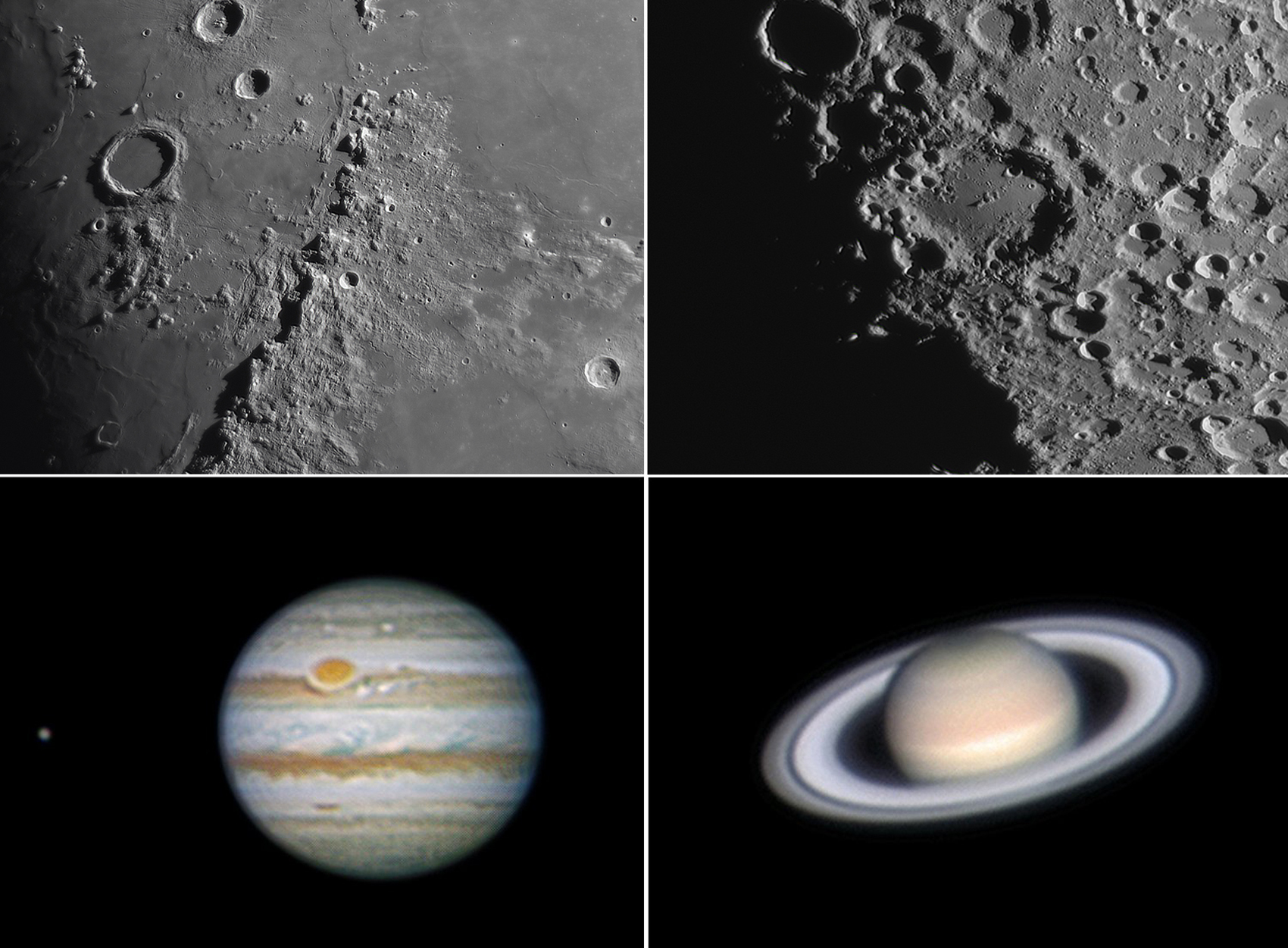
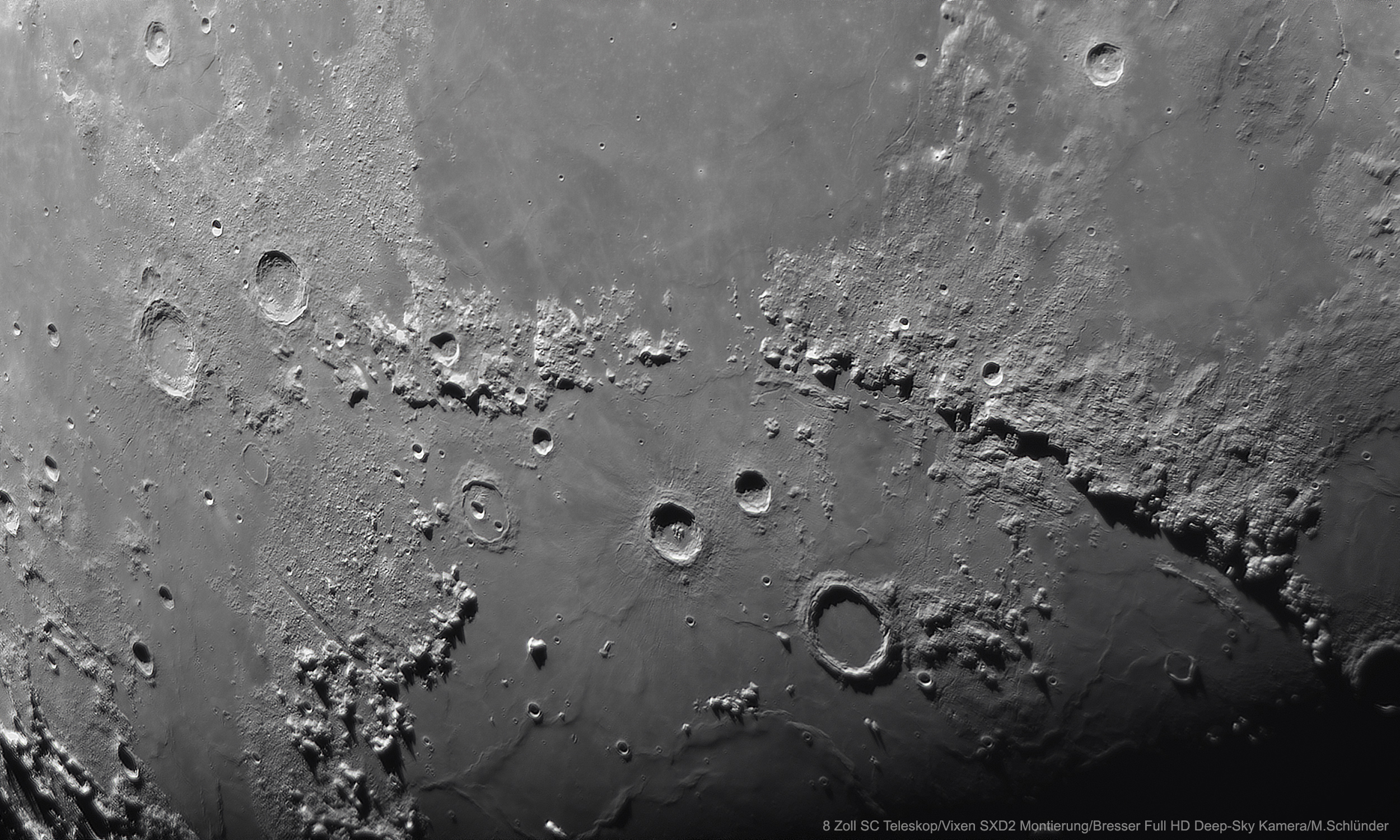
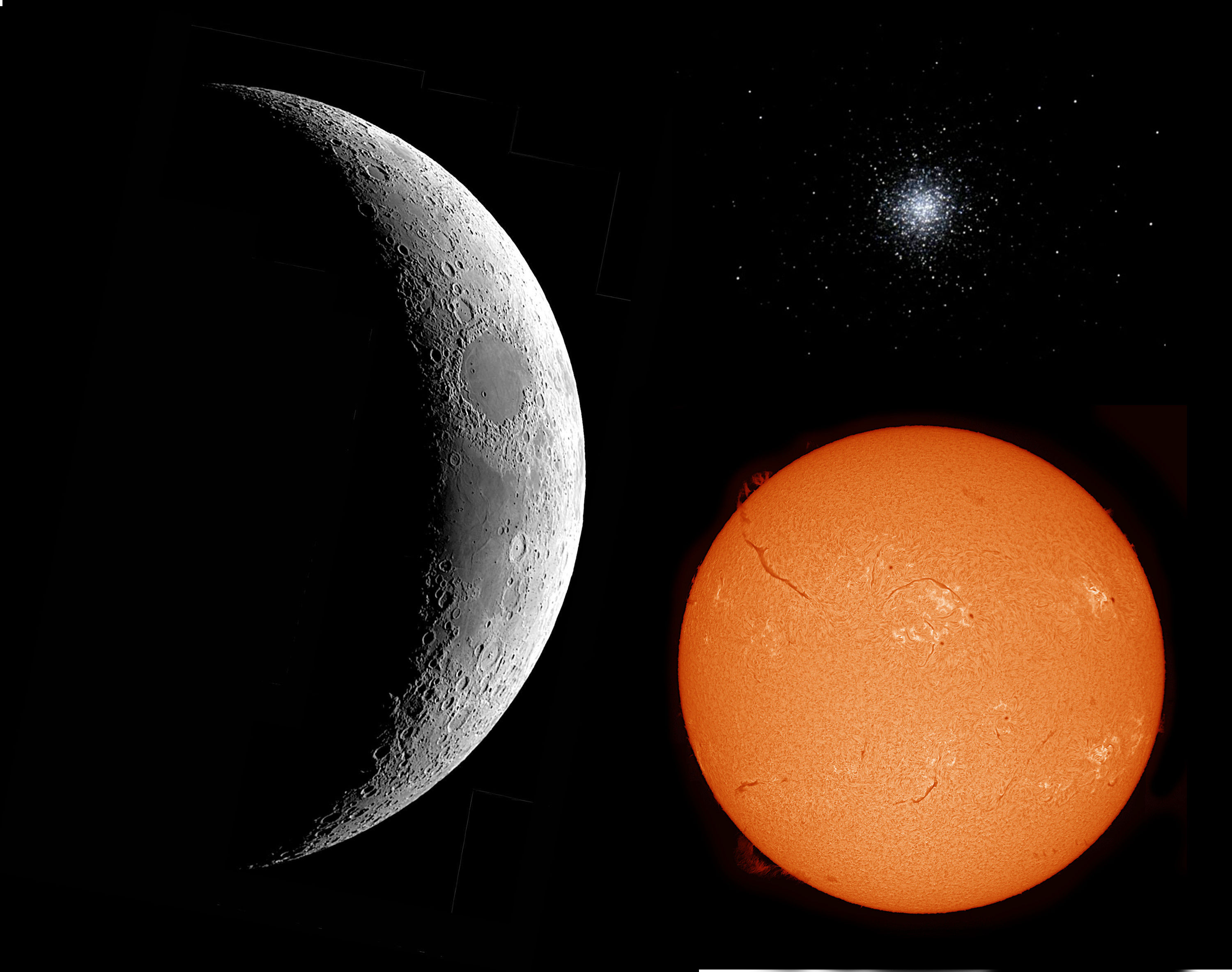
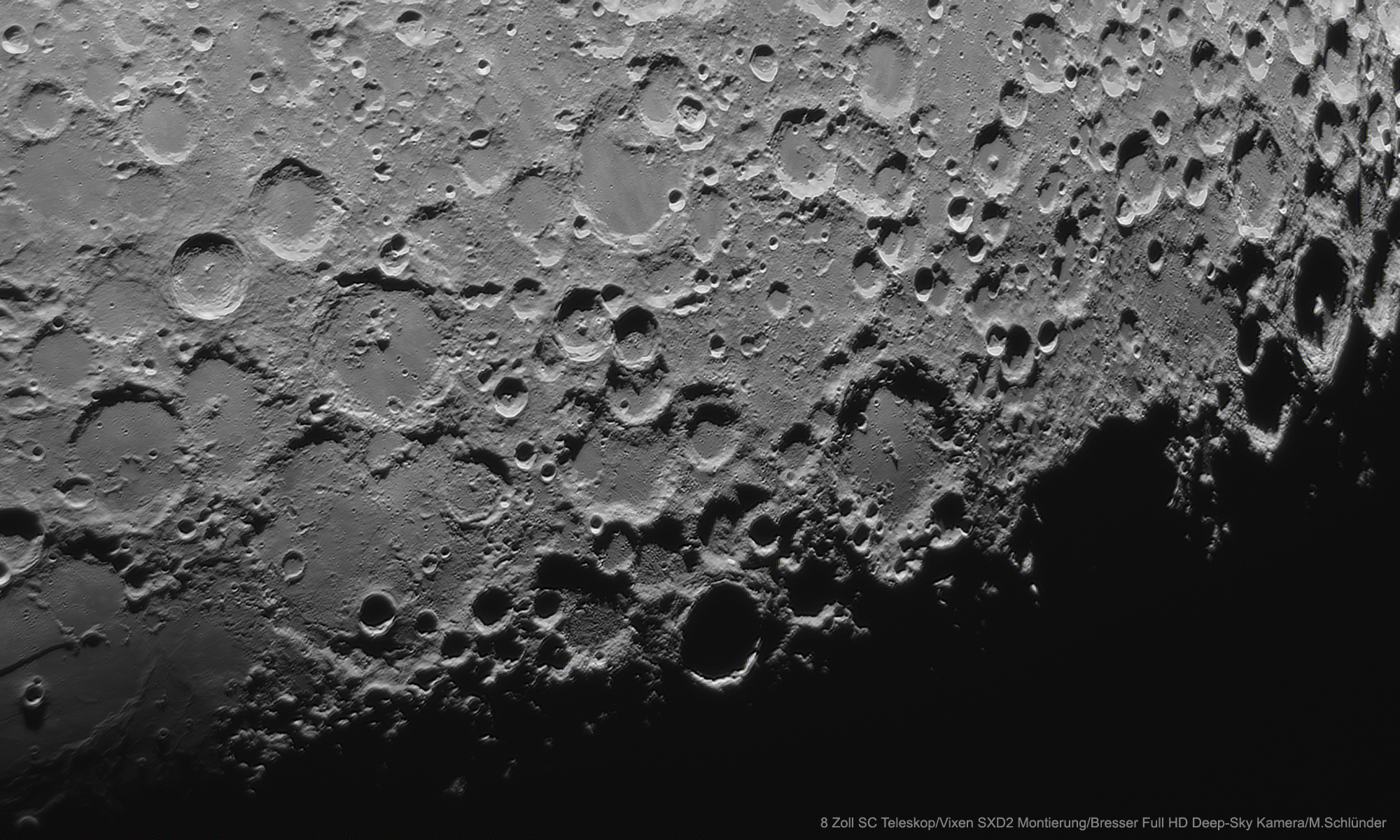
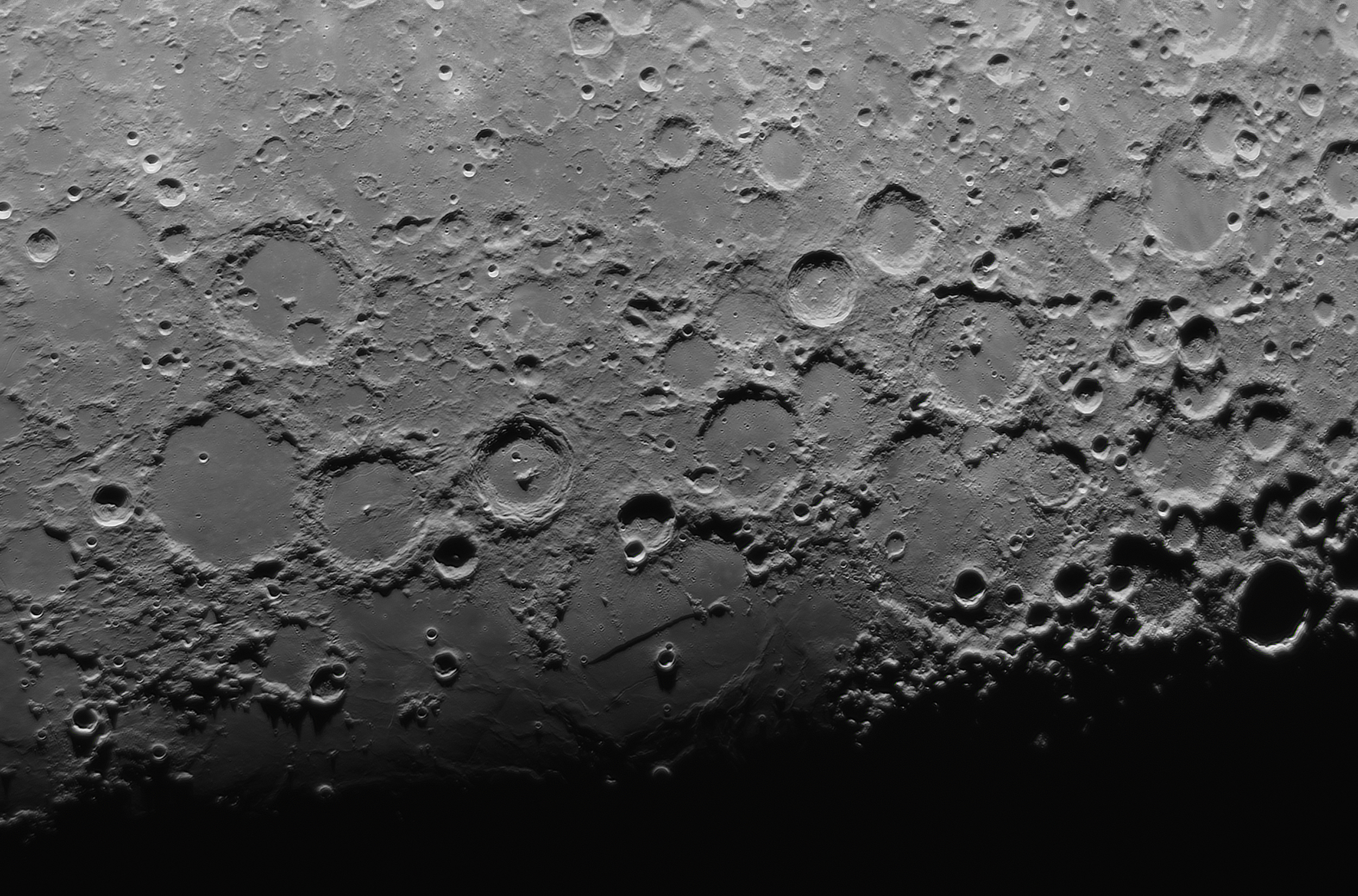
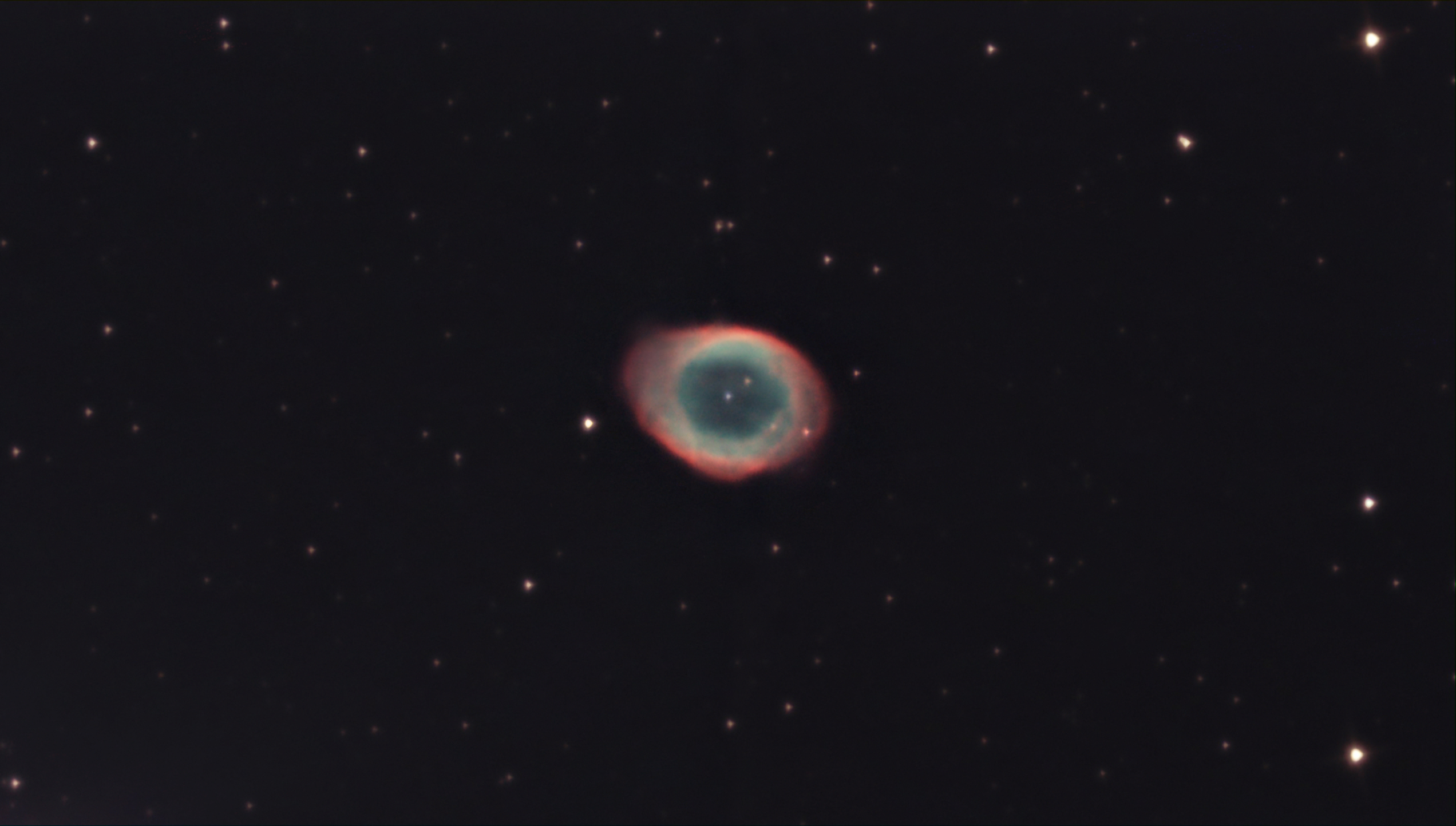
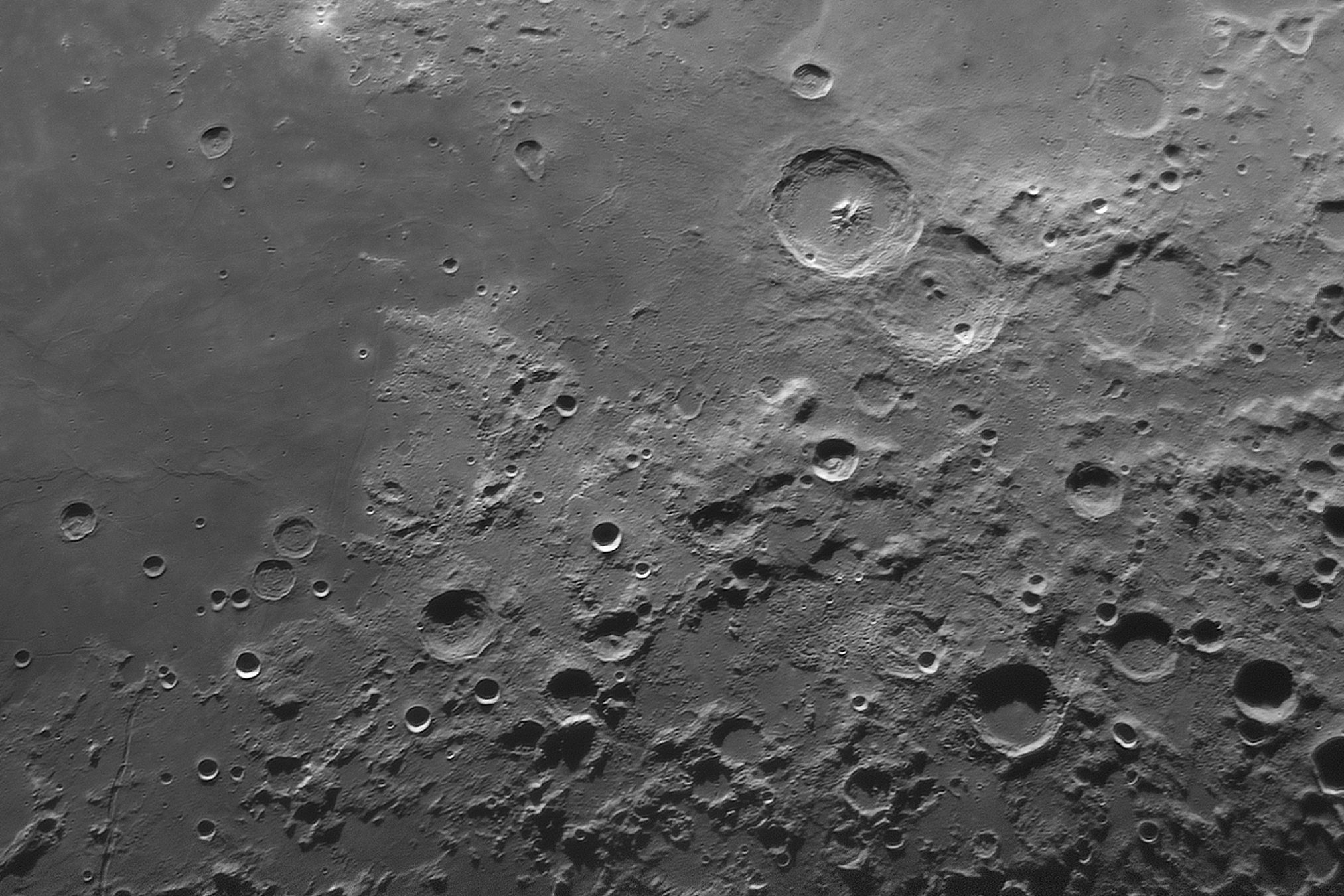







































Multi-purpose camera, can be used as an astrophoto color camera or as an autoguider for high accurate tracking
- All-round astronomical camera with SONY IMX290 CMOS colour sensor
- Planet and Deep-Sky imaging and Guiding
- Photos and videos in Full HD resolution 1936 x 1096 pixels
- Camera with ST4 autoguider function for accurate tracking
- Professional ToupSky imaging software included
- Very low noise level of the SONY CMOS sensor
- High light sensitive CMOS sensor allows short exposure times
- Easy to connect the camera via a 1.25 inch plug-in sleeve with filter thread
- ASCOM driver included ; Camera connection to PC via USB 2.0
- Operating system: WINDOWS 10 + 11
Testbericht zu BRESSER Full HD Deep-Sky Kamera & Guider 1.25
von Reinhard Pankrath: "Mond am Taghimmel für Astro - Fotografie geeignet?"
Gefreut hatte ich mich über längere Wolkenlücken und einen offensichtlich durchsichtigen, also klaren, Himmel. Wenn man am Tag den Mond so schön sehen kann, obwohl die Sonne noch scheint, kann der Himmel nicht trübe sein und ist folglich auch für die Verwendung eines Teleskopes gut!
Was mich dann doch geärgert hat, war die fürchterliche Luftbewegung des doch so erwünscht klaren Himmels! Aber jeder Test wird erst richtig gut und aussagekräftig, desto schwieriger er durchzuführen ist. So auch hier.
Meine Erwartung schien realistisch: Wenn der Himmel zwar klar ist, aber die Sonne noch scheint, habe ich weniger Kontrast. Und das brachte mich auf die Idee, eine bestimmte Zusammenstellung meiner Geräte zu testen. Um es vorweg zu sagen: Das Ergebnis hat meine Erwartungen weit übertroffen! Aber hier der Weg dorthin:
Equipment:
• Die Bresser Exos 2 Goto Montierung
• OMC 140 deluxe Teleskop (140 / 2000), ein Rumak
• Die HD – Kamera von Bresser mit dem der neuesten Entwicklung entsprechenden back illuminated Chip von Sony
Warum so?
Erstens: Die Exos 2 ist stabil und läuft gut, habe ich sowieso für meine Teleskope. Die Alternative wäre ein Fotostativ – also ist die Wahl klar :-)
Zweitens: Das OMC wurde von Harrie Rutten berechnet inklusive des überragenden Blendensystems, das für einen optimalen Kontrast sorgt. Das sollte bei Tageslicht doch besonders geeignet sein! Eine bessere Abstimmung kann ich bei anderen Teleskopen auch nicht erwarten.
Drittens: Die HD-Kamera von Bresser hat diesen modernen Chip. Rauscharm und besonders lichtempfindlich durch die derzeit modernste Technik. Kann man bei Sony nachlesen, warum diese Technik so ist. Sehr aufwändig und deshalb auch teurer als herkömmliche Cmos (außer bei Bresser, da hat mich der Preis gewundert, andere lassen es sich besser bezahlen). Aber eben effektiv. Und die Lichtempfindlichkeit der back illuminated Chips sorgt dafür, dass die Belichtungszeiten besonders kurz gehalten werden können. Gerade bei Luftunruhe wichtig, je kürzer belichtet, desto mehr „friert“ die Luftunruhe beim Einzelbild ein. Also siehe oben. Soll die Kamera mal zeigen, was sie kann.
Jetzt muss ich etwas gestehen: Beim ersten Probieren der Kamera habe ich mich über ein gegenüber anderen Programmen komplizierteres Einstellungsmenü geärgert. Da muss man tatsächlich die Bedienungsanleitung lesen! So was! - Nun, ich sage jetzt: Gut, dass es alle diese Parameter gibt. Ein bisschen lernen hat mir auch nicht geschadet und bei diesem Test hat es sich bewährt. Da kam das zugute, was man alles regeln kann.
Das Bild war trotz des Sonnenlichthimmels NICHT flau! Korrekturen am Histogramm – bitte feinfühlig, zuviel ruiniert das Bild dann doch – an der Zeit und Verstärkung, am Weißabgleich und so weiter... haben die Aufnahme des Videos mit 1000 Bildern verarbeitungswürdig gemacht. Gut, man muss vor der Aufnahme etwas Zeit investieren, um alles den Gegebenheiten anzupassen. Einer Automatik würde ich es aber sowieso nicht überlassen. Bei Aufnahmen möchte ich doch bitte noch selber eingreifen können, um das Optimum heraus zu holen. Bei dem erreichten Kontrast konnte ich dann auch die Schärfeleistung erkennen und entsprechend fokussieren. Und so entstanden dann die Videos, bis die Wolken wieder zu dicht wurden und ich abbauen musste.
Die Bearbeitung, stacken, nachbearbeiten mit verschiedenen Freewareprogrammen, in das Format des Ergebnisses für die Veröffentlichung umwandeln, erfolgte dann wie immer. Und hier das Ergebnis. Kann man erkennen, dass die Sonne geschienen hat, als die Aufnahme entstand?
Mein Fazit: Die Kamera ist sehr gut zu gebrauchen, auch wenn die Bedingungen schwierig sind, alle Achtung.
Ich freue mich, dass ich auch so den Mond fotografieren kann und nicht immer auf die Dunkelheit warten muss. Das erweitert das Zeitfenster für mein Hobby doch sehr. Und jetzt ärgere ich mich nie mehr über viele Parameter zur Einstellung der Aufnahme! :-)
Liebe Grüße und Clear Sky
Reinhard Pankrath
Alle Bilder: Alle Rechte / Copyright bei Reinhard Pankrath
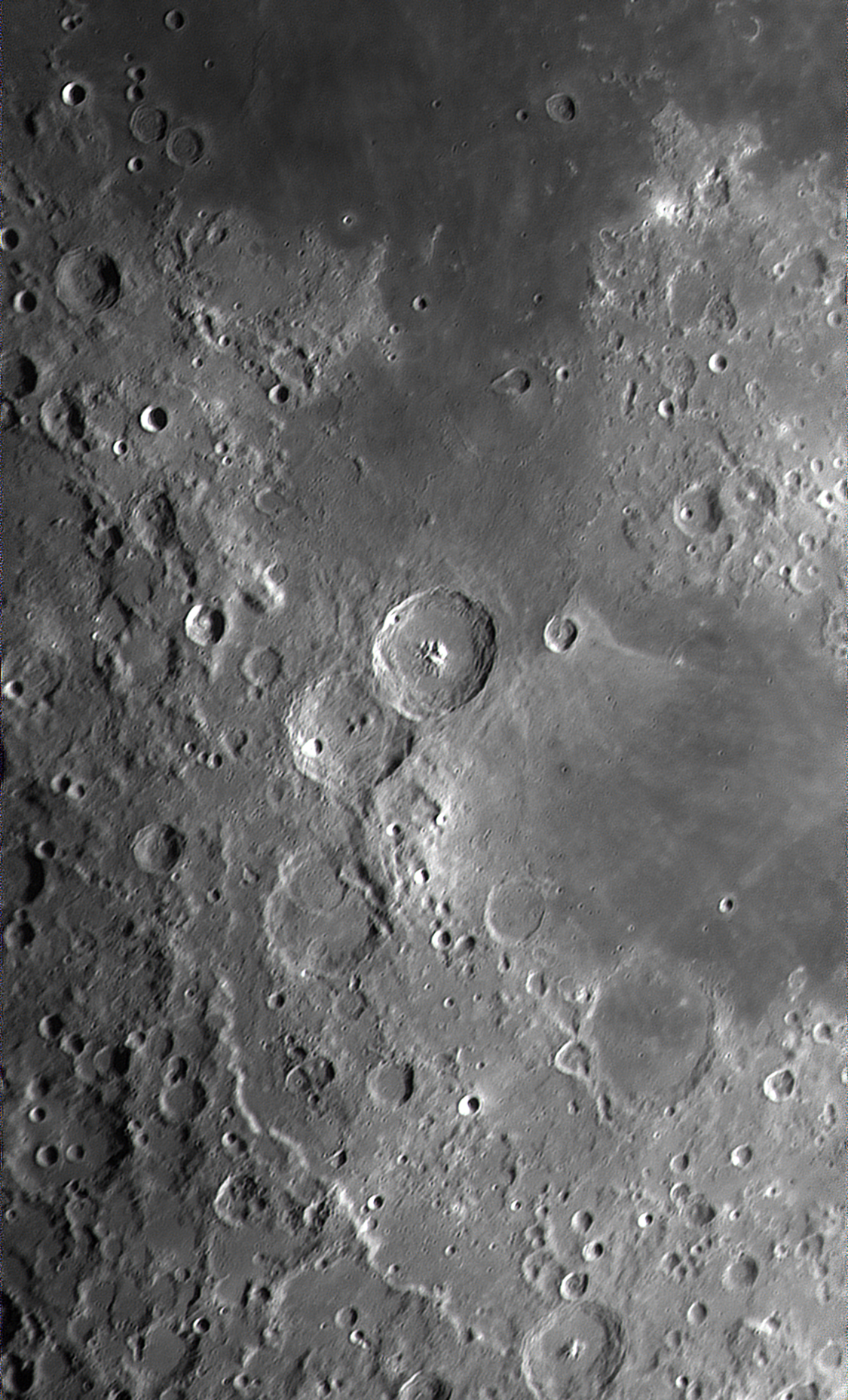

One of the main features of the new backlit SONY IMX290 CMOS sensor is its high light sensitivity, which makes it possible to detect deep-sky objects without active cooling. SONY has increased the quantum efficiency at 533 nm wavelength up to 77%, which is much better than other CMOS sensors have been able to achieve in the past.
Connect this camera to a guidescope and attach the camera's built-in ST-4 port, directly to your telescope's equatorial mount guide port and autoguide - using many popular audioguiding programs (PHD, Guidedog and more). Autoguiding enables you to take accurate pictures with long exposure times of several minutes. Thanks to the extra light-sensitive camera, you now always have a suitable guide star to hand, even using short exposure times. An ST-4 protocol connection cable is also included. Simple automatic tracking at its best.
You can use this camera with all guiding telescopes, or off-axis guiders that accept a 1.25 " tube, 1.25" filter thread (M28.5x0.6) or C-mount adapter thread (1 "x1 /32").
IMPORTANT NOTES:
This is not a stand-alone guider camera. You always need a Windows 10/11 computer to take pictures and for autoguiding.
The autoguider software is not included. You can use PHD2 Guiding, Guidedog, Metaguide, Guidemaster (freeware) or AstroArt, MaxIm DL (paid).
DOWNLOAD PHD2-Guiding: https://openphdguiding.org/
DOWNLOAD GuideDog: http://barkosoftware.com/GuideDog/index.html
DOWNLOAD latest camera software and drivers: http://www.touptek.com/download/showdownload.php?lang=en&id=2
SPECIFICATIONS
- Camera type: BRESSER / Touptek GPCMOS02000KPA color
- Sensor: SONY IMX290 CMOS color, backlit
- Image and video size: Full HD 1936 x 1096 pixels (video 15 FPS)
- Native sensor size in pixels: 1936 x 1096
- Exposure times: 66µs to 16min
- Binning: YES, 2x2
- Megapixel: 2.1 MP
- Sensor size in mm: 5.6 x 3.1
- Pixel size: 2.9 µm x 2.9 µm
- Bit depth: 8/12 switchable
- ST-4 Compatible Autoguider: YES
- CNC milled housing made of aluminum
- Protective strap on the camera housing
- Camera tube diameter: 1.25 "(31.7 mm)
- Camera connection thread: C-mount + 1.25 "filter thread
- Computer interface: USB 2.0
- C-mount extension tube with 1.25 inch filter thread included
- No IR cut filter installed
-
Operating system: WINDOWS 10 + 11
- ASCOM driver included
Field of view for different focal lengths in mm (given in arc minutes):
400mm - 48.2 'x 27.3'
500 mm - 38.6 'x 21.8'
600 mm - 32.1 'x 18.2'
700 mm - 27.5 'x 15.6'
800 mm - 24.1 'x 13.6'
900 mm - 21.4 'x 12.1'
1000 mm - 19.3 'x 10.9'
1250 mm - 15.4 'x 8.7'
1500 mm - 12.9 'x 7.3'
1750 mm - 11.0 'x 6.2'
2000 mm - 9.6 'x 5.5'
SCOPE OF DELIEVERY
- Full HD camera
- C-mount adapter
- USB 2.0 PC connection cable with a length of 200cm
- Interface cable for ST-4 autoguider port with 150cm length
- Dust cap for camera tube
- Software CD
| Colour: | green |
|---|---|
| Material: | Aluminium |
Zubehör
Similar products
Customers also viewed


